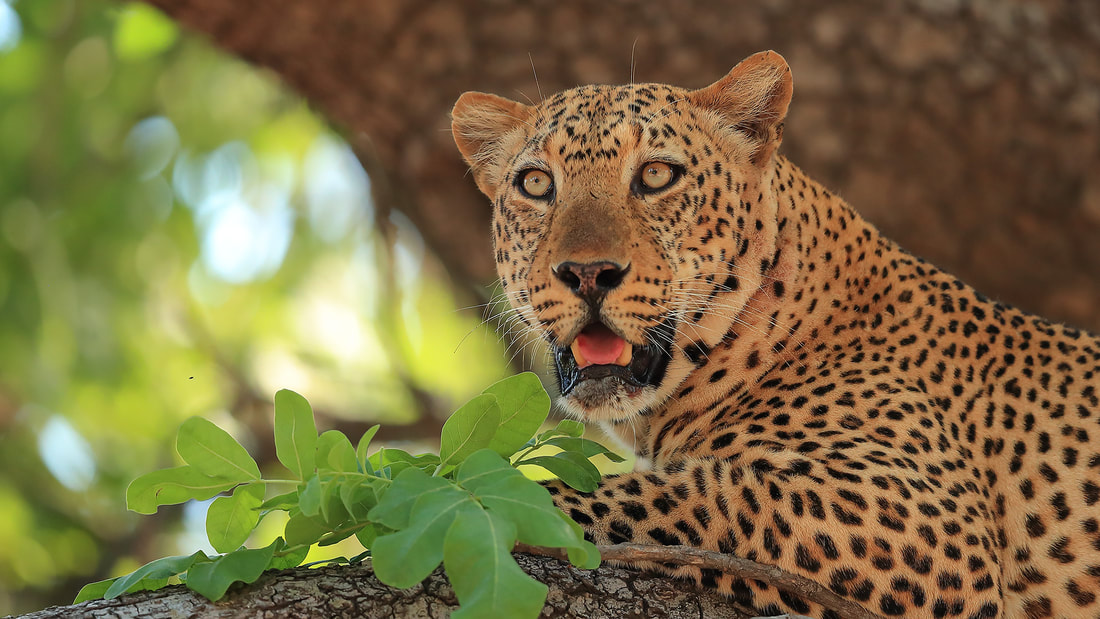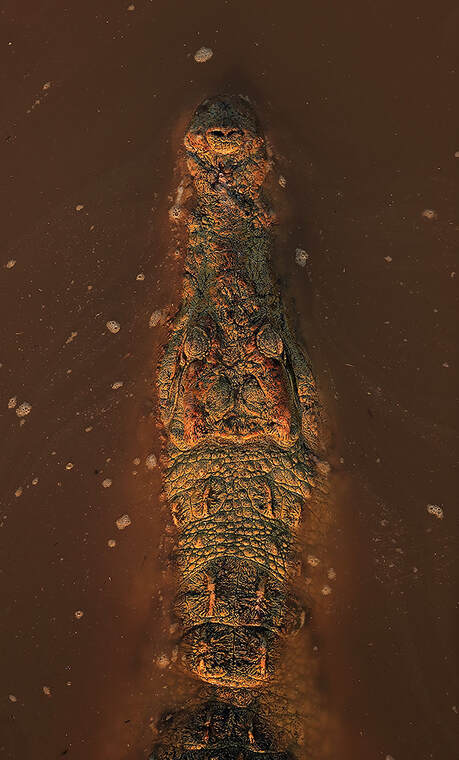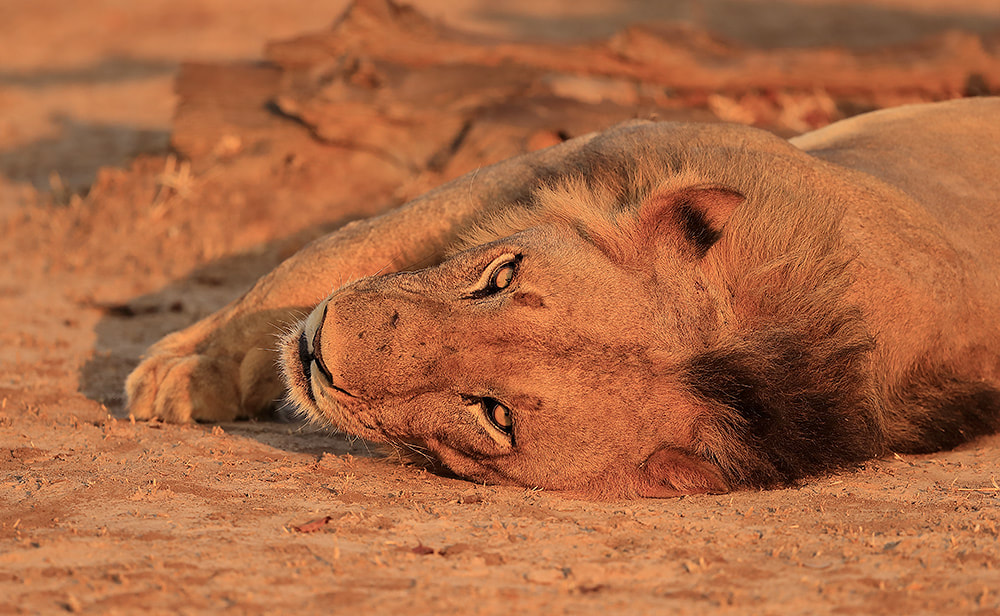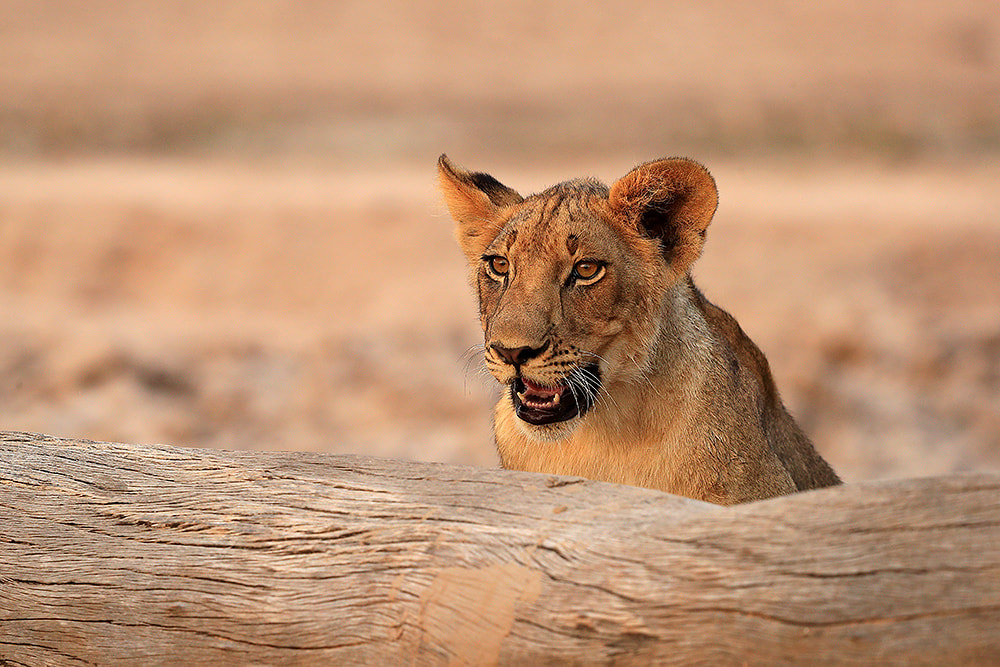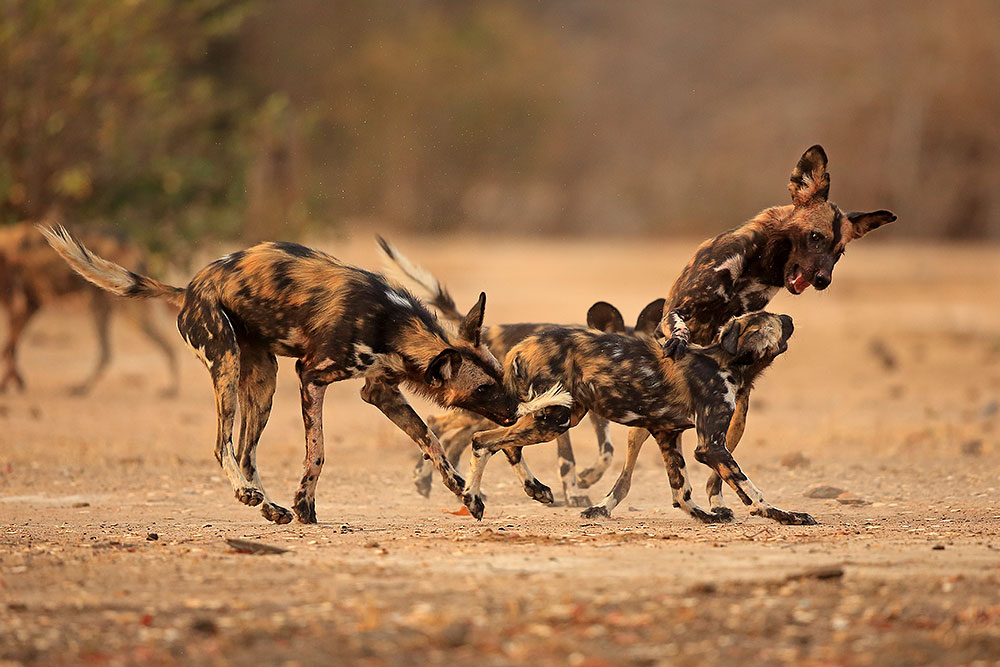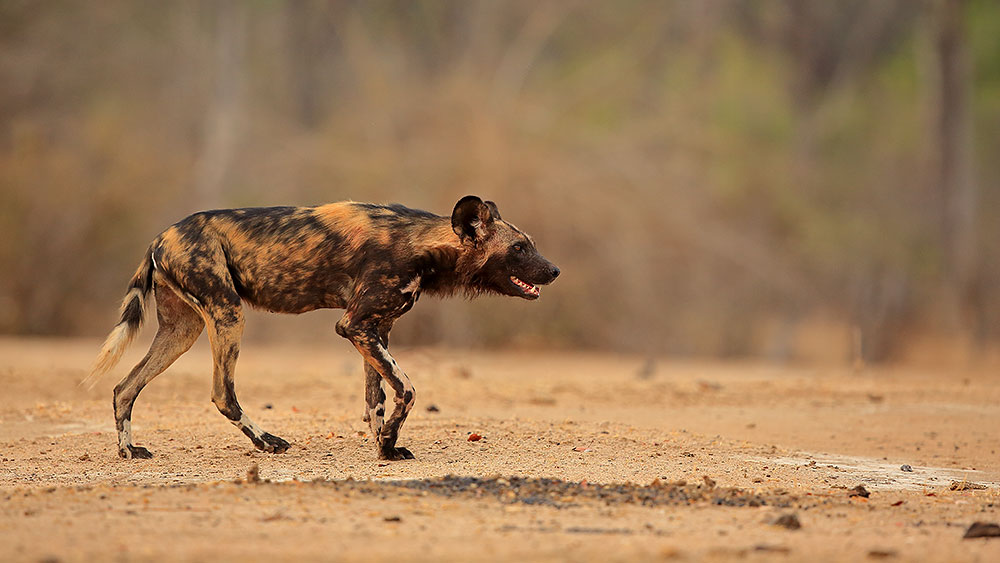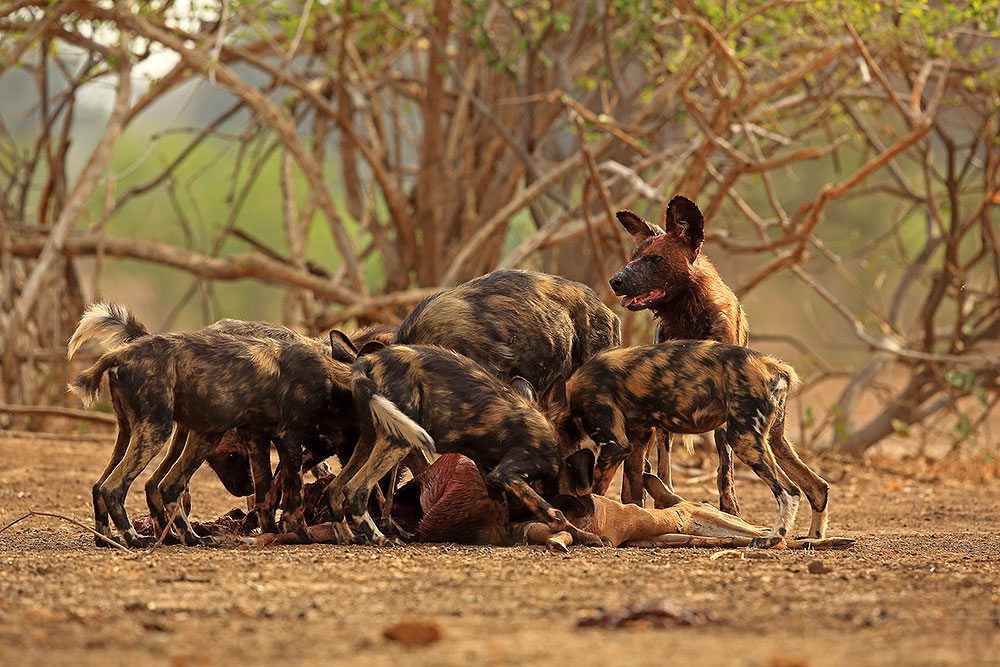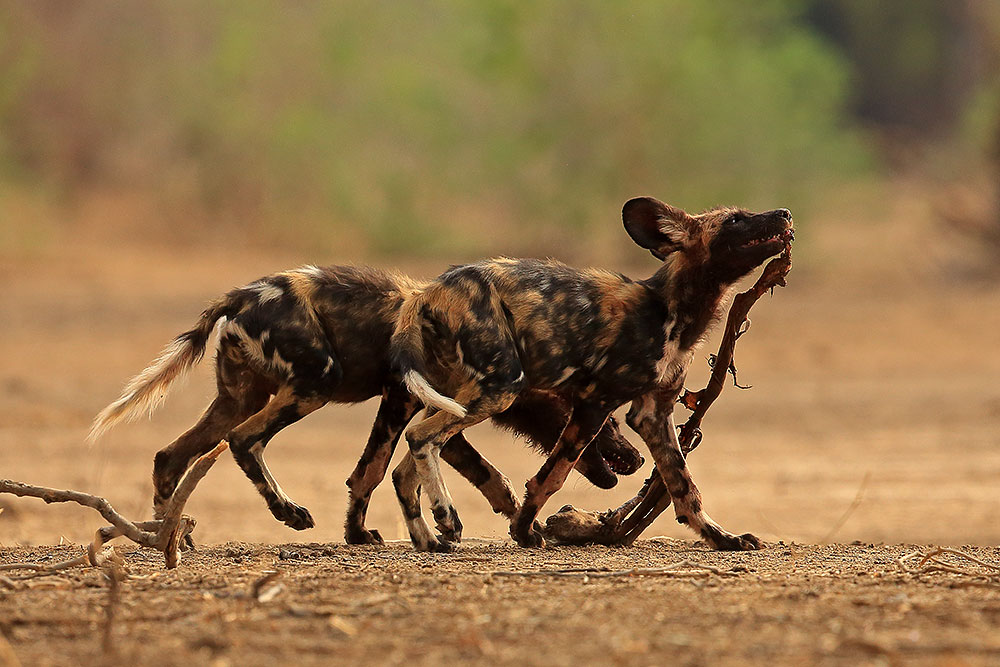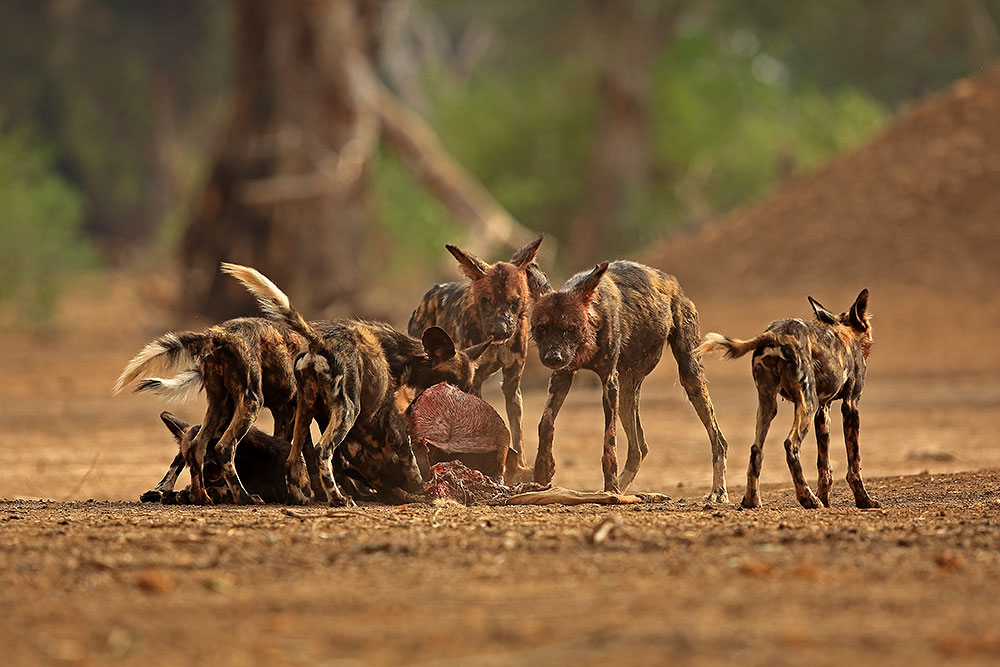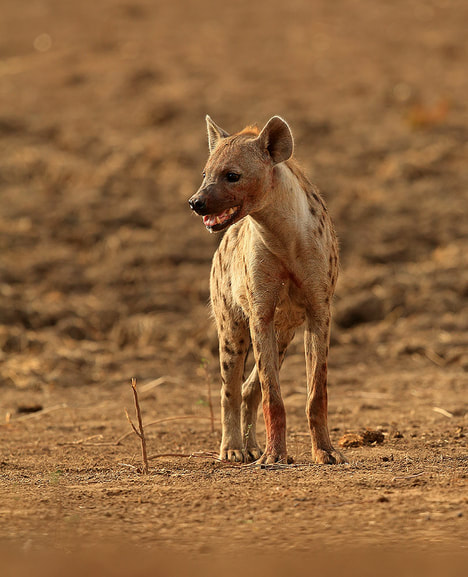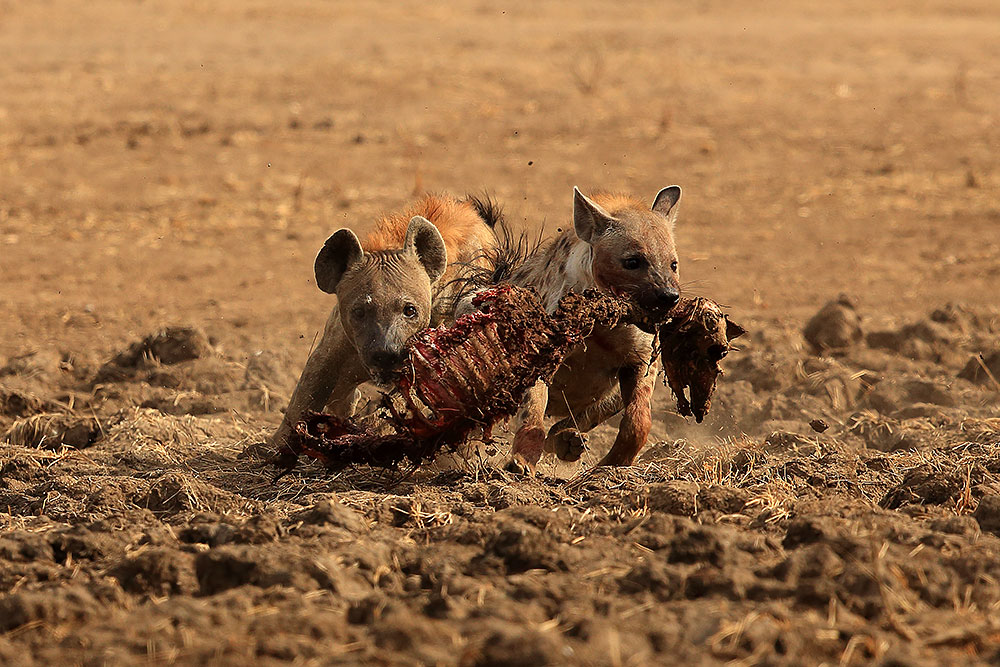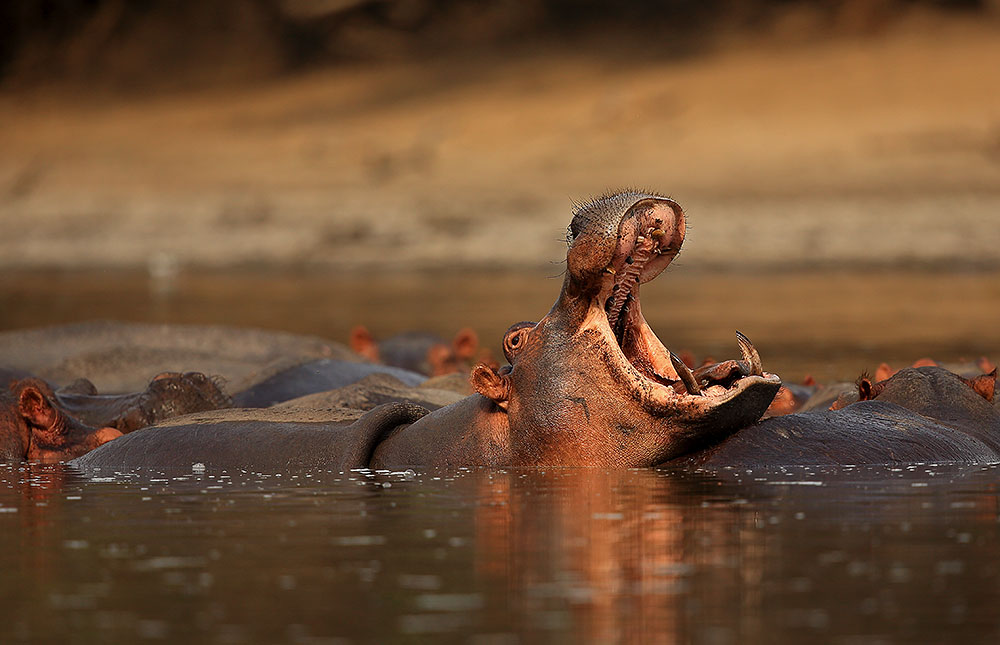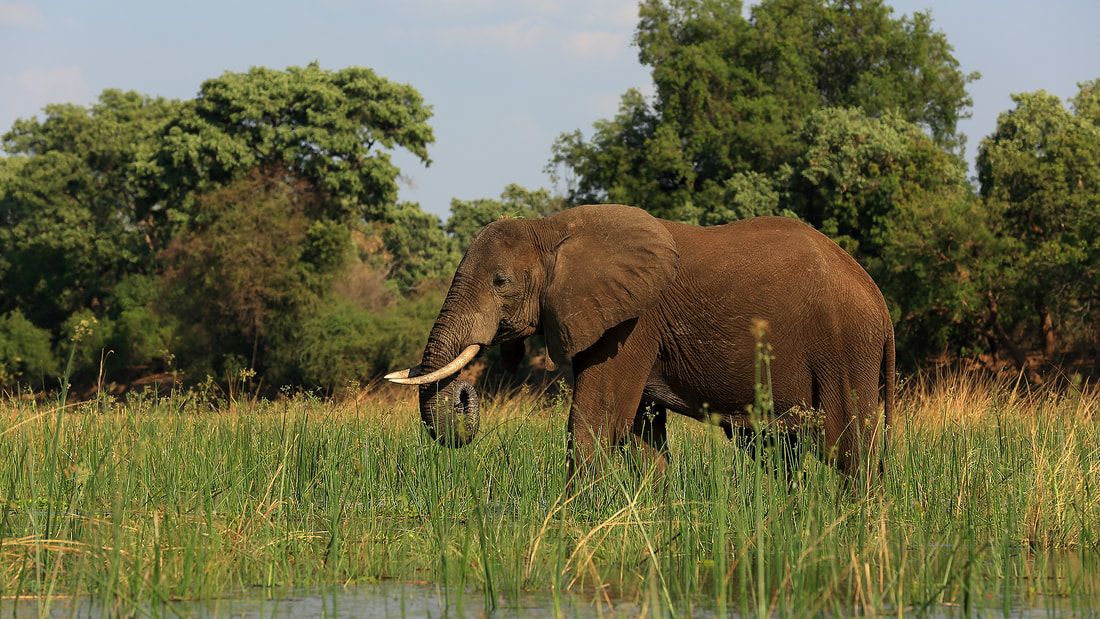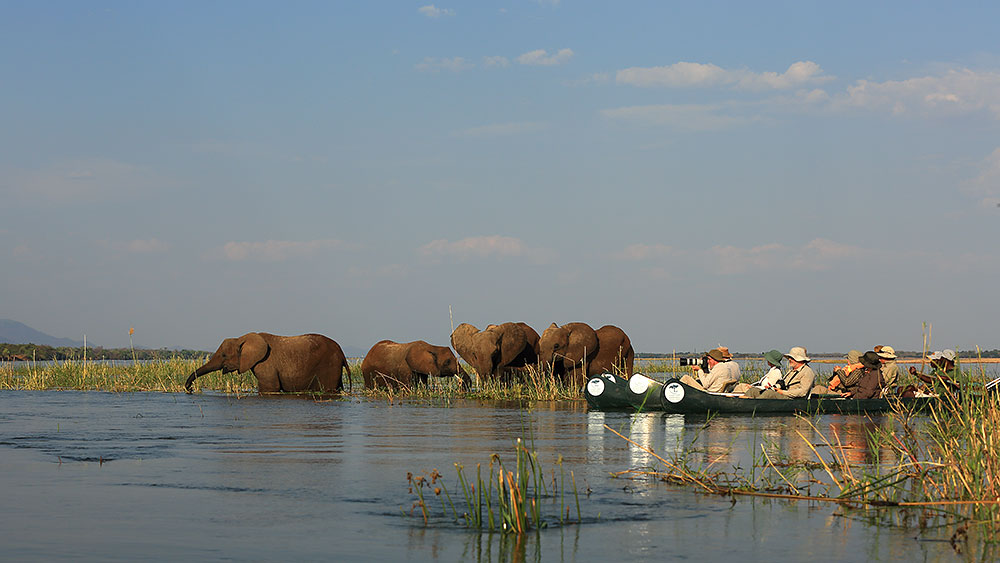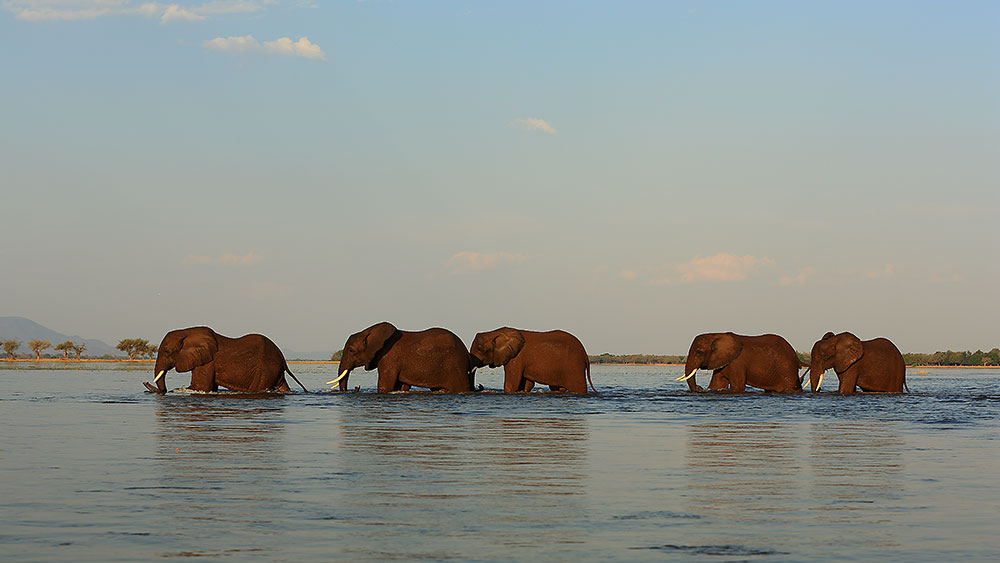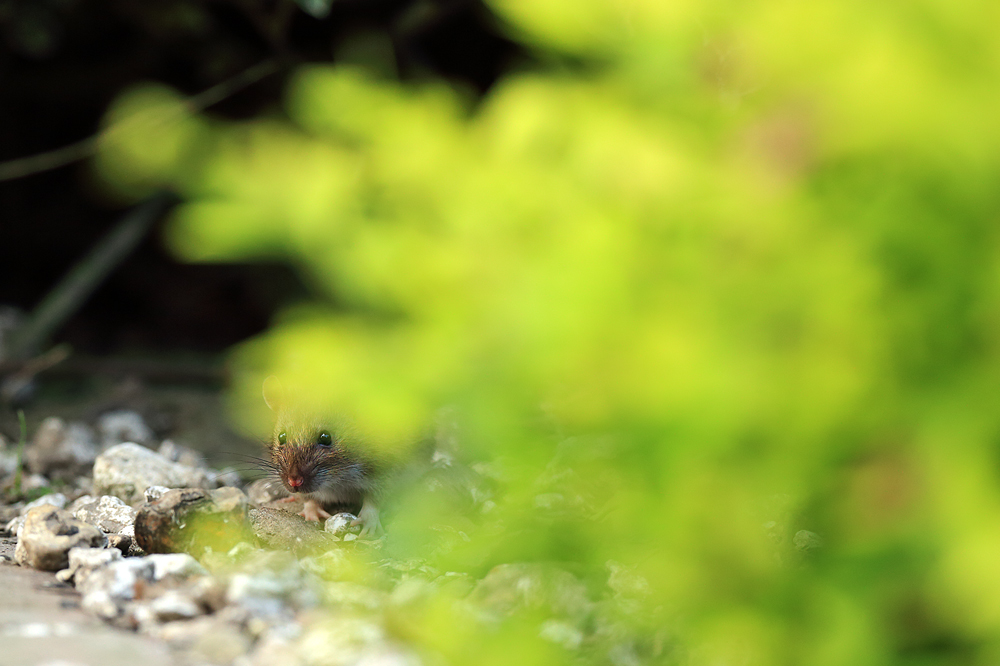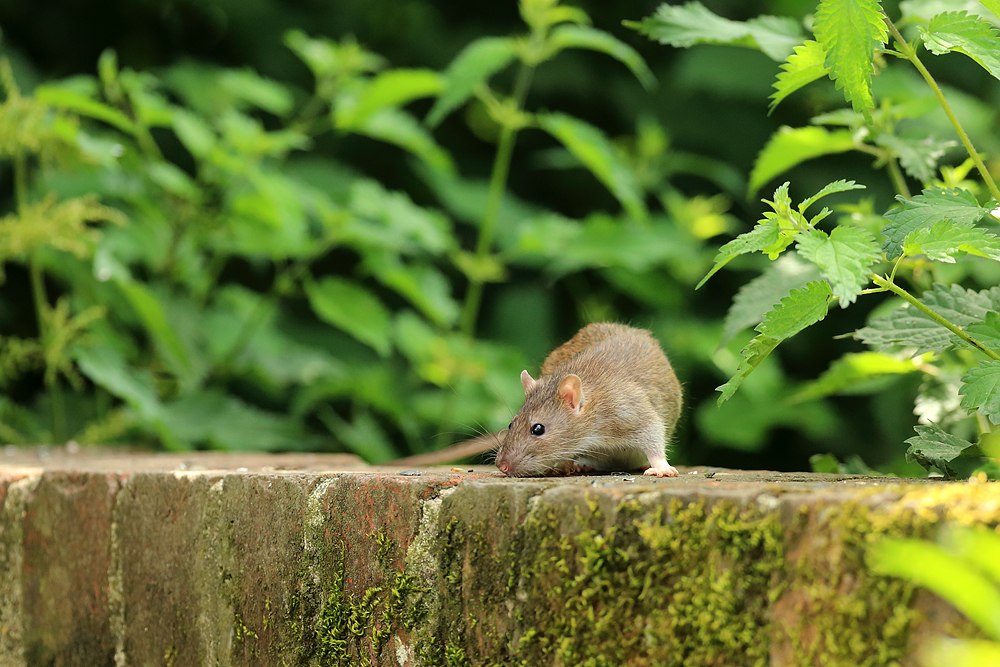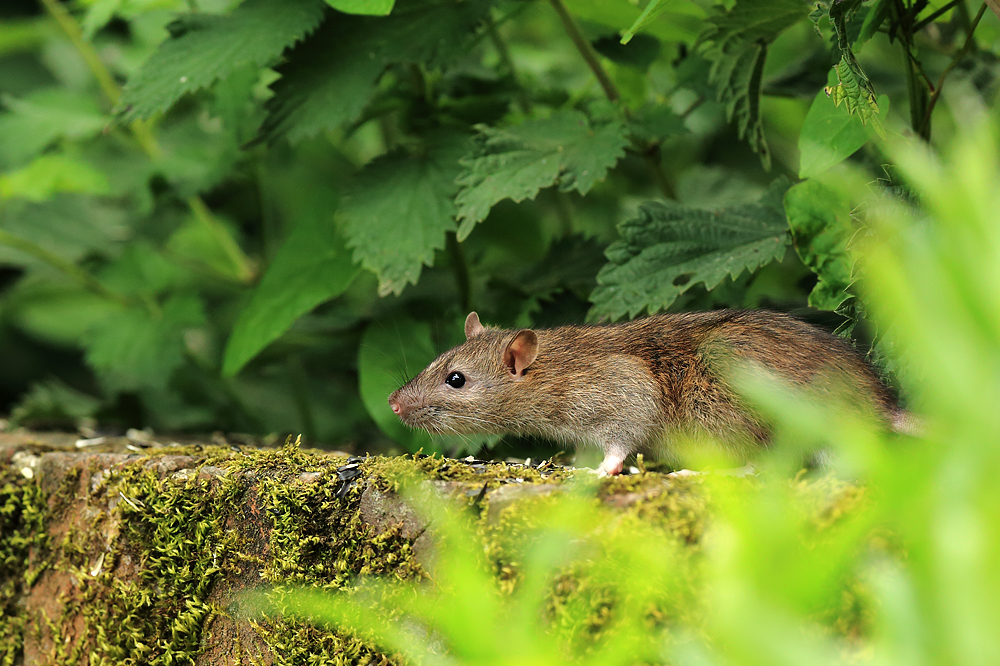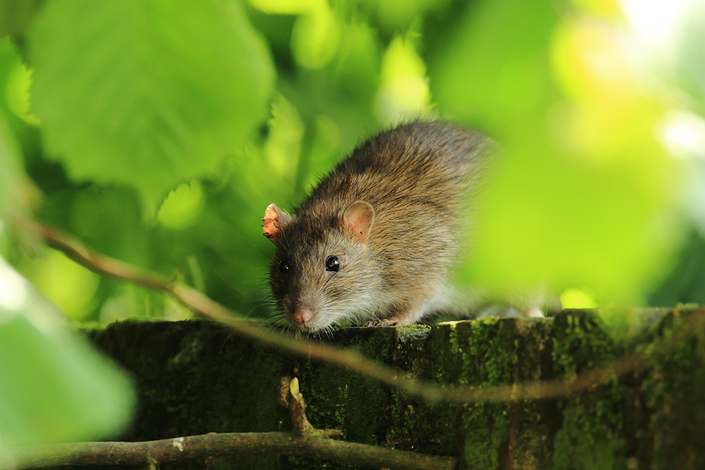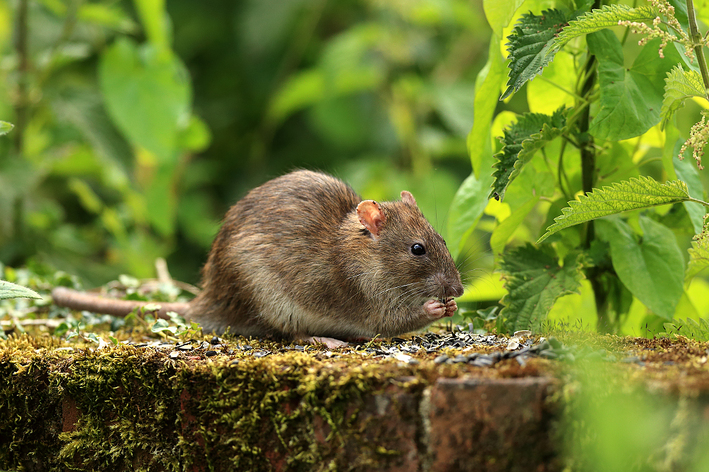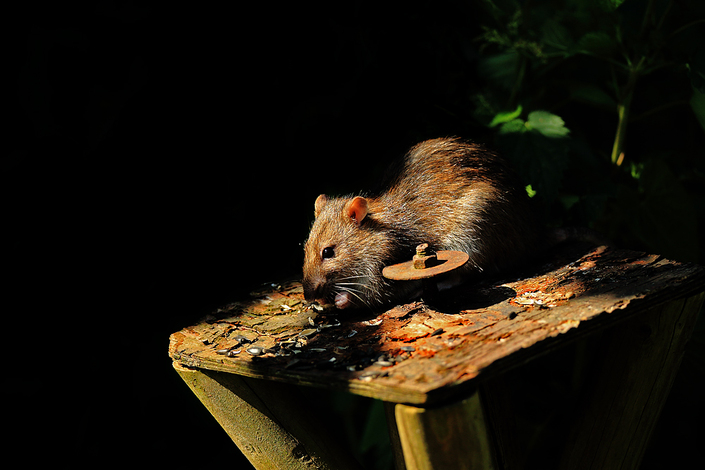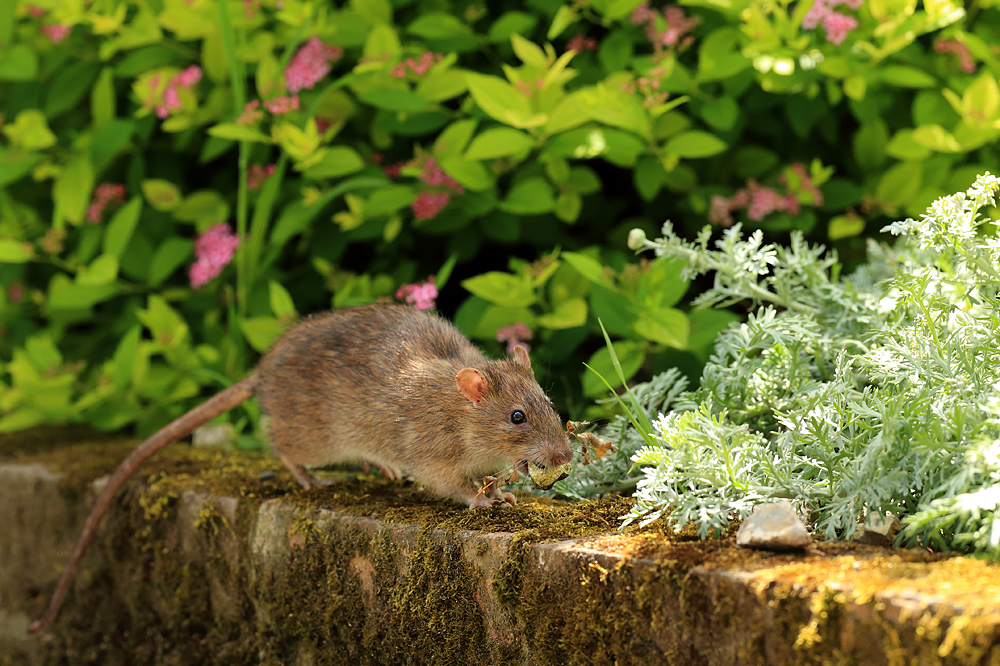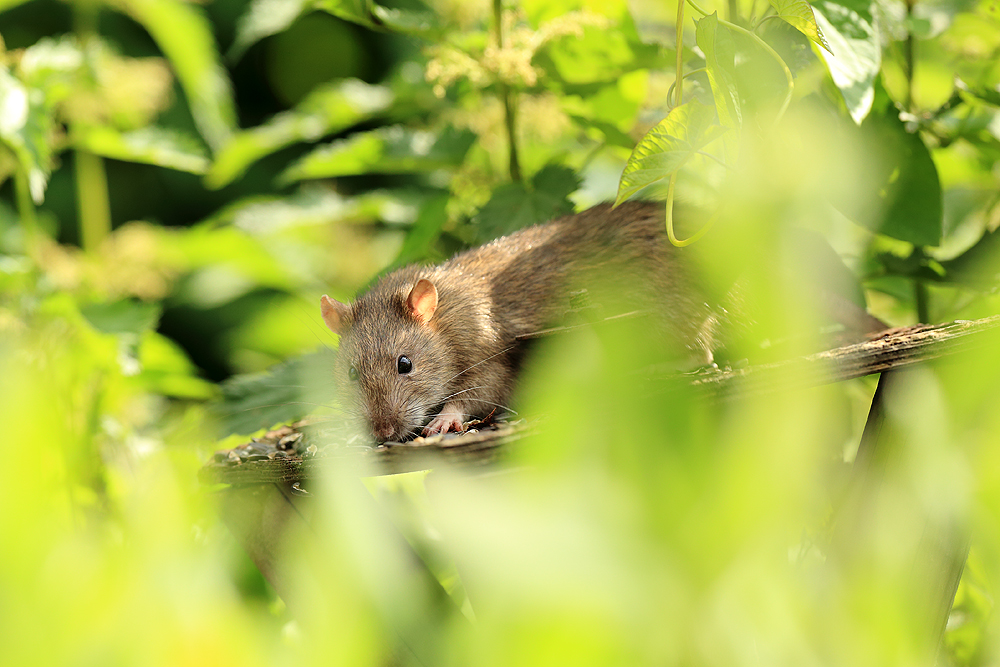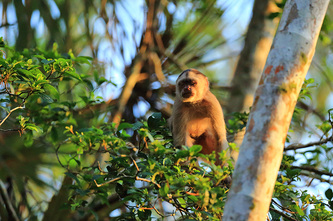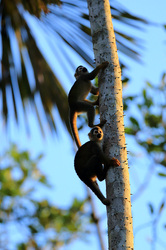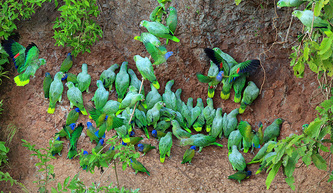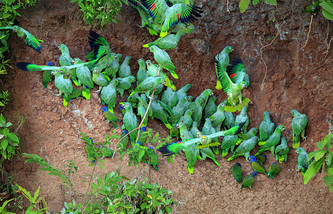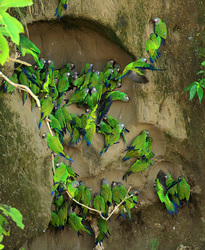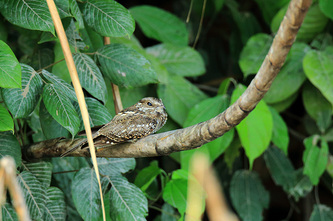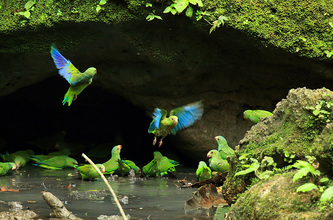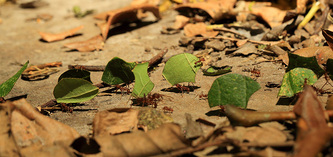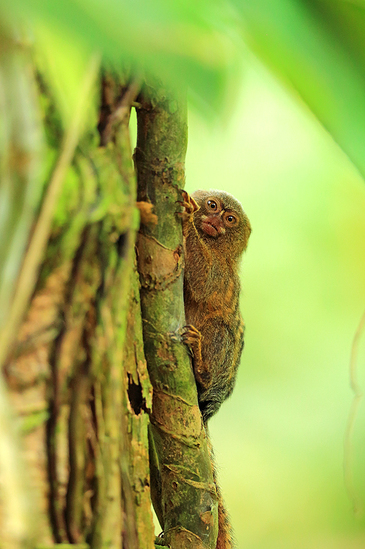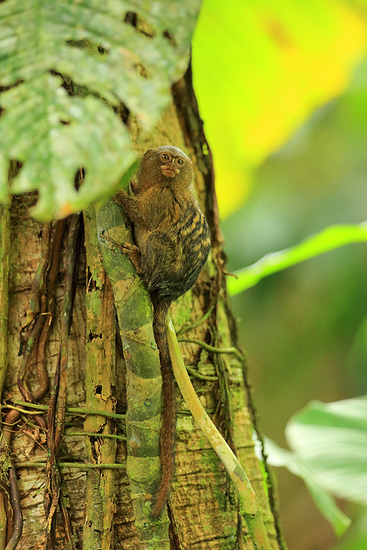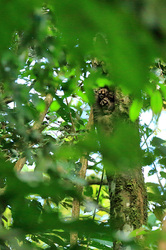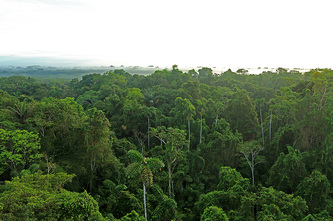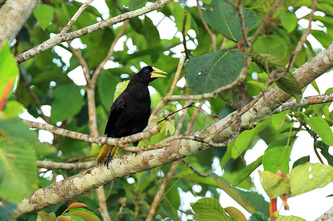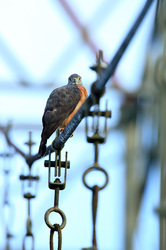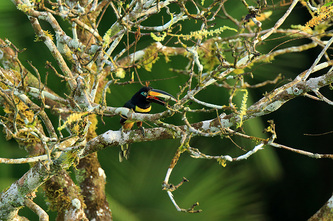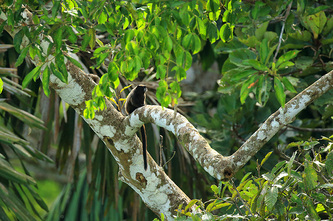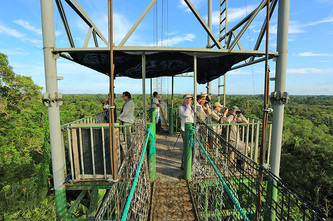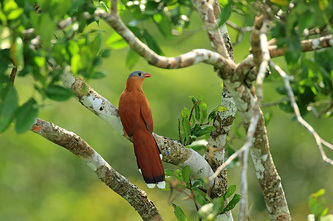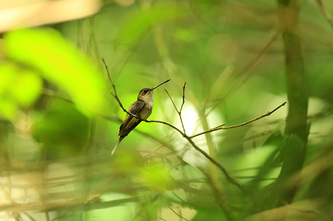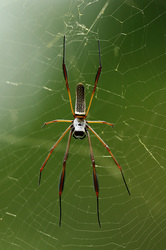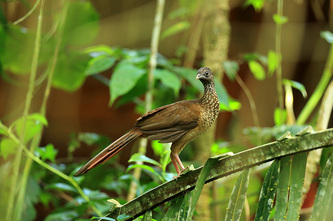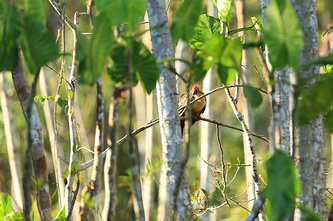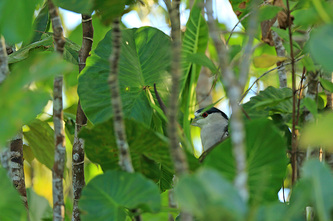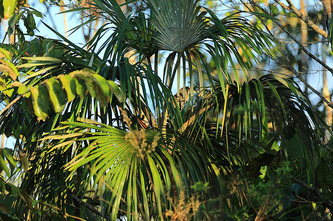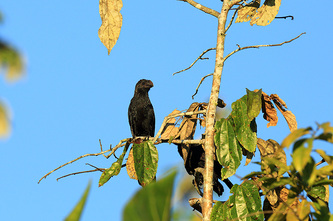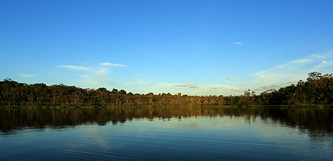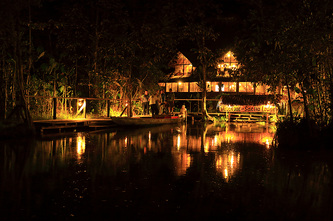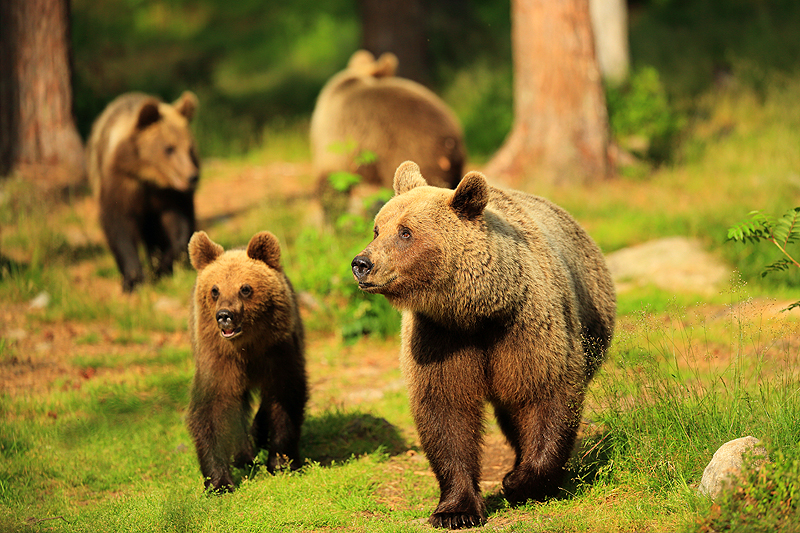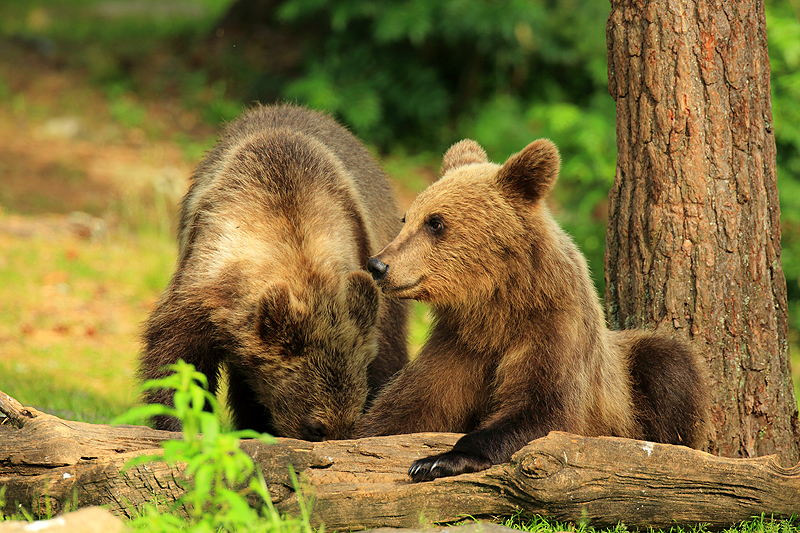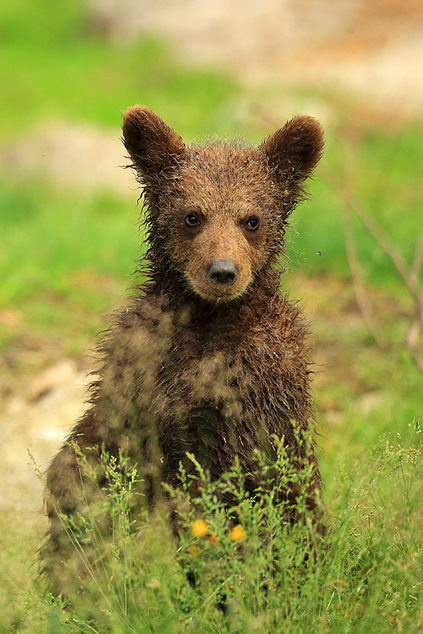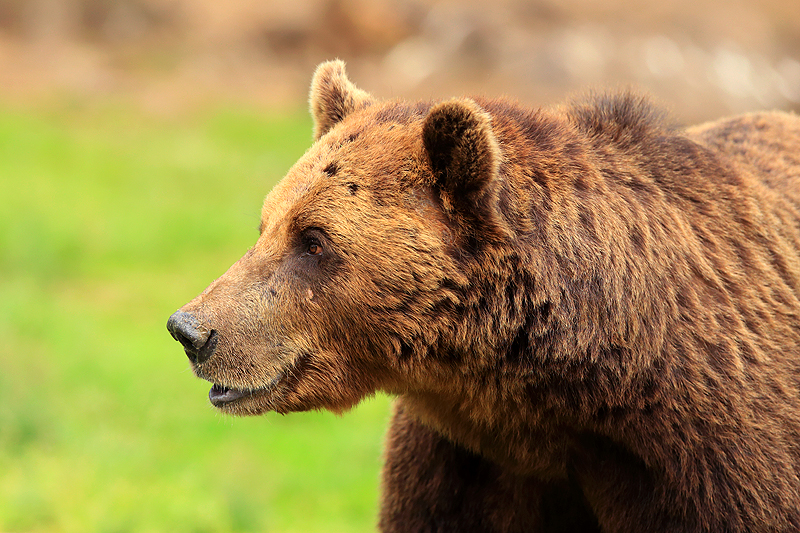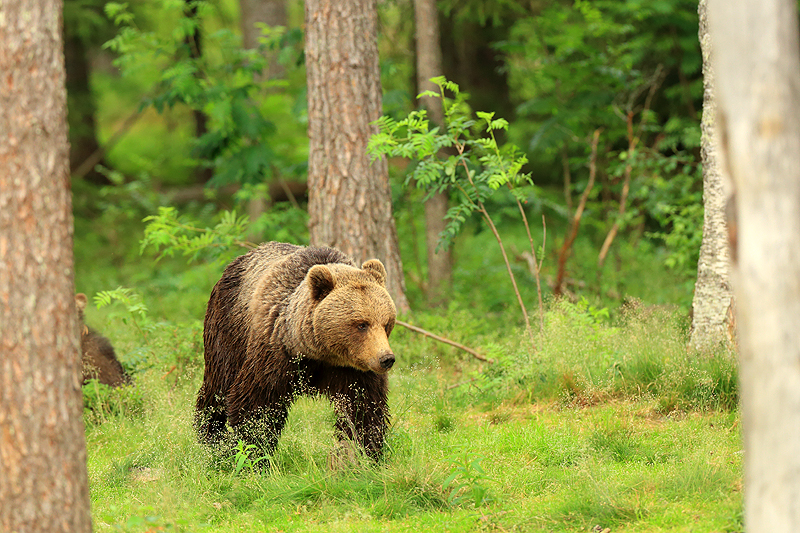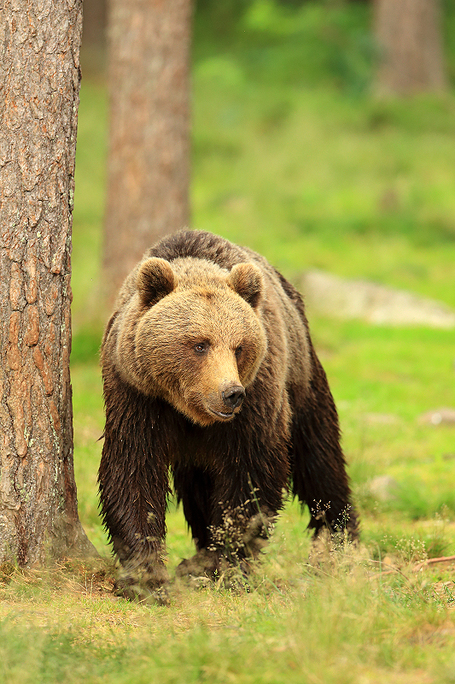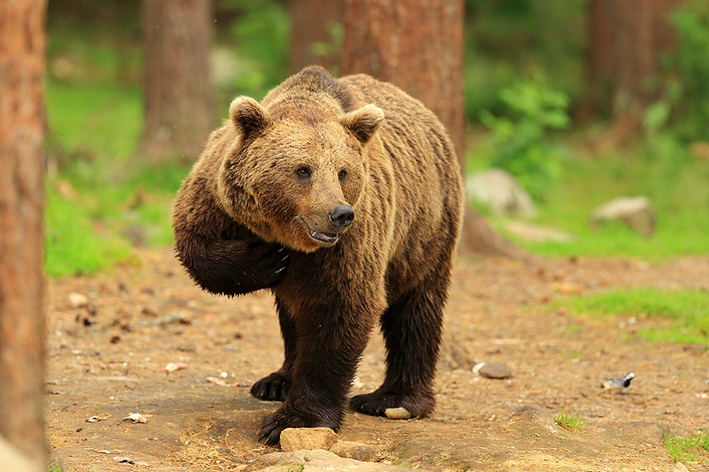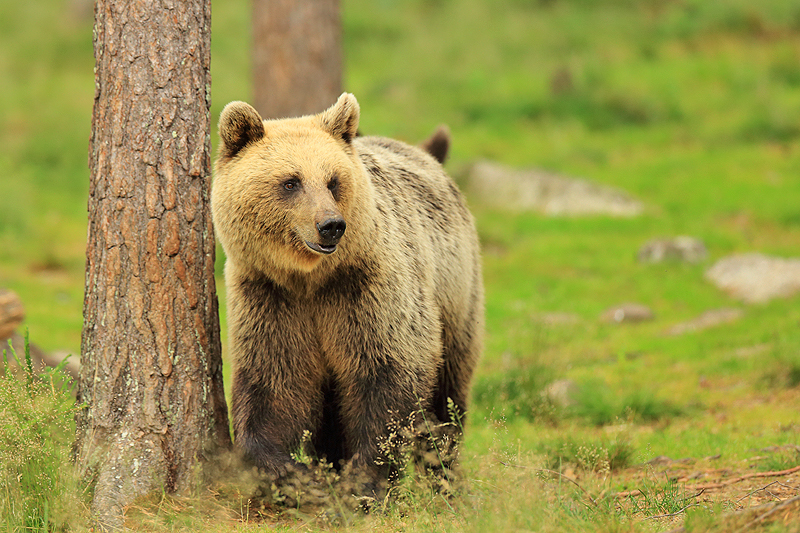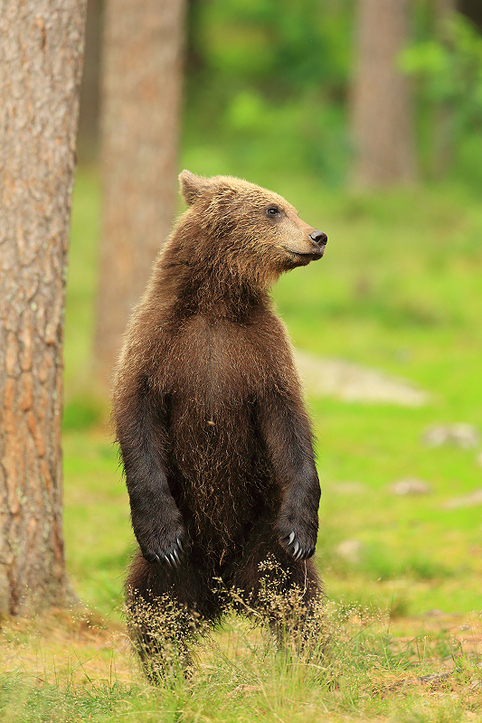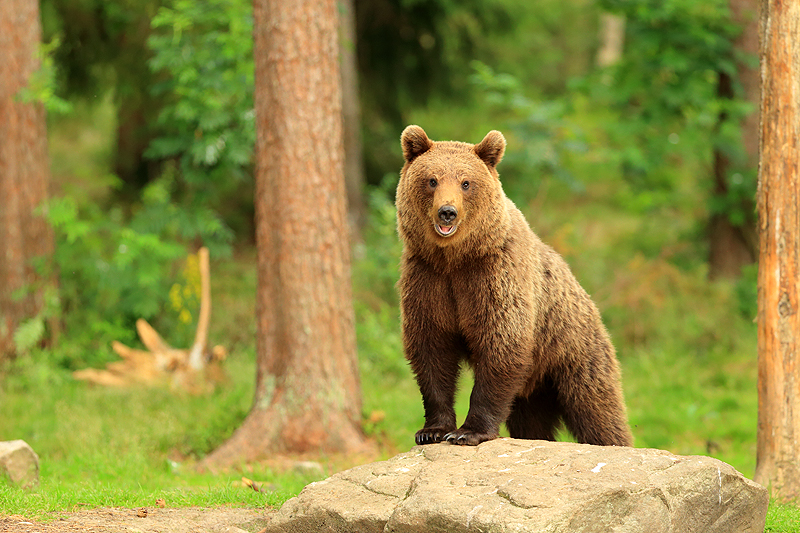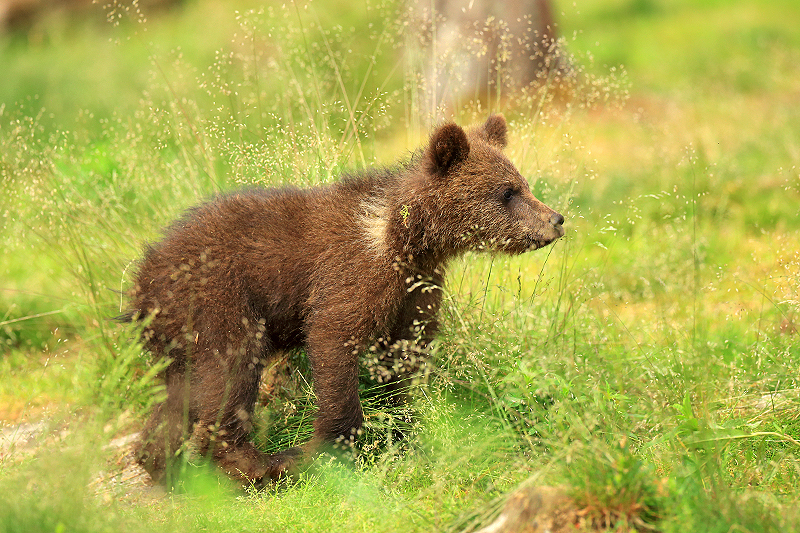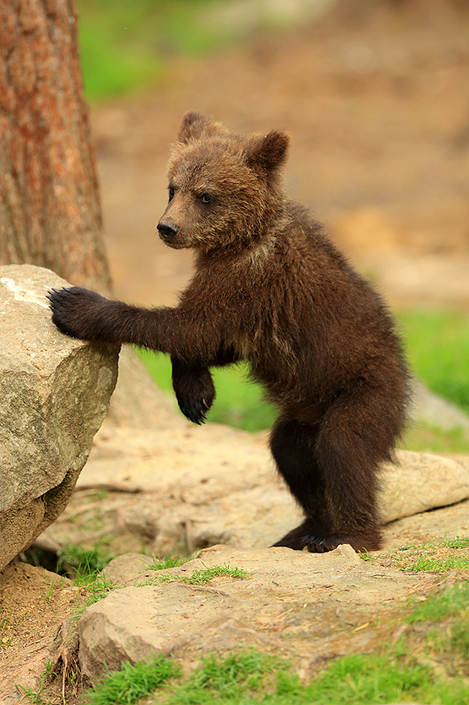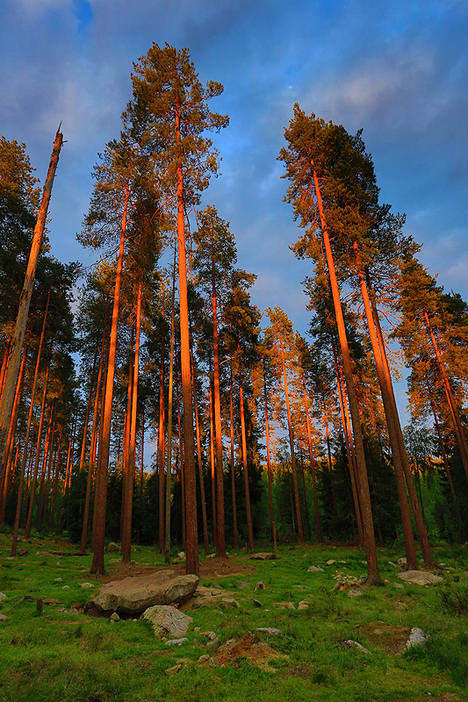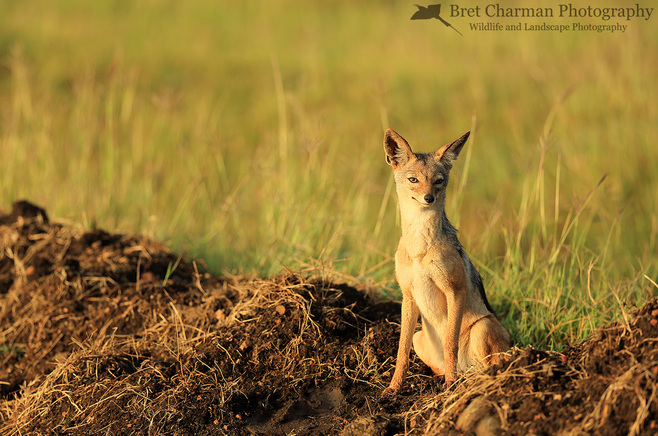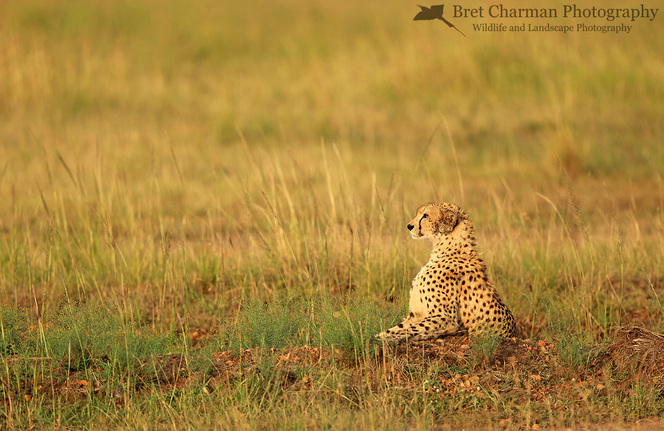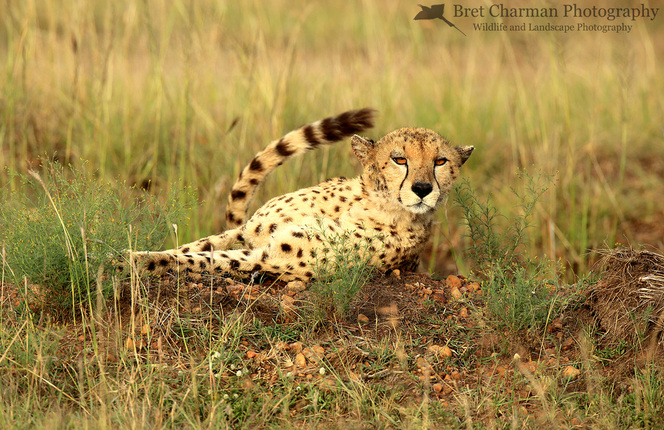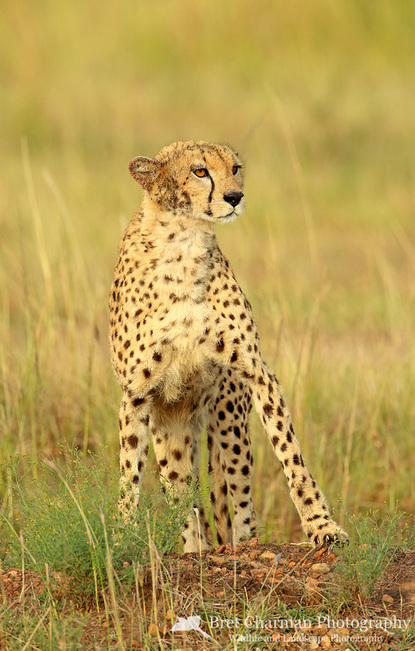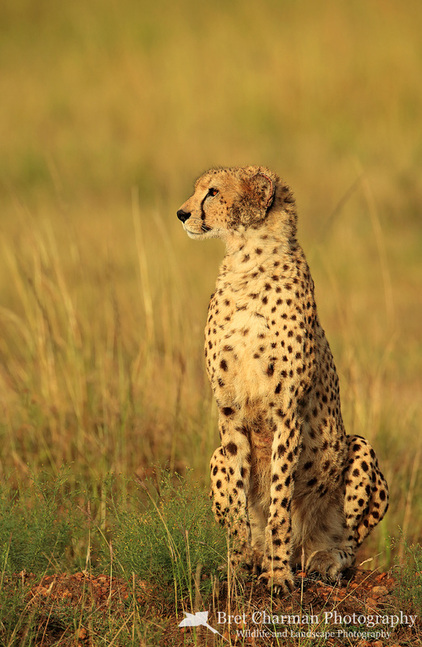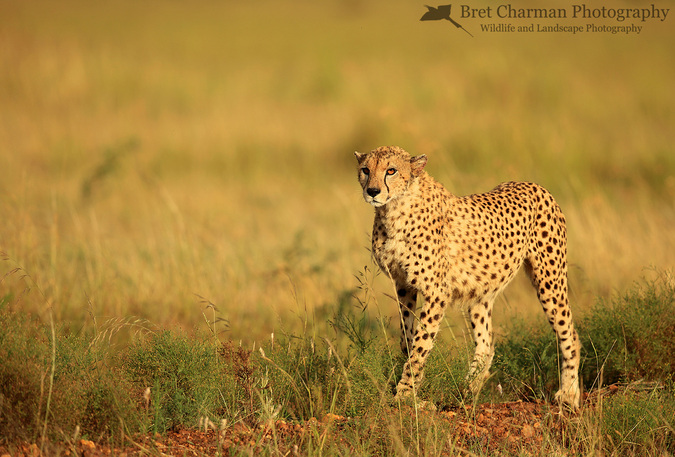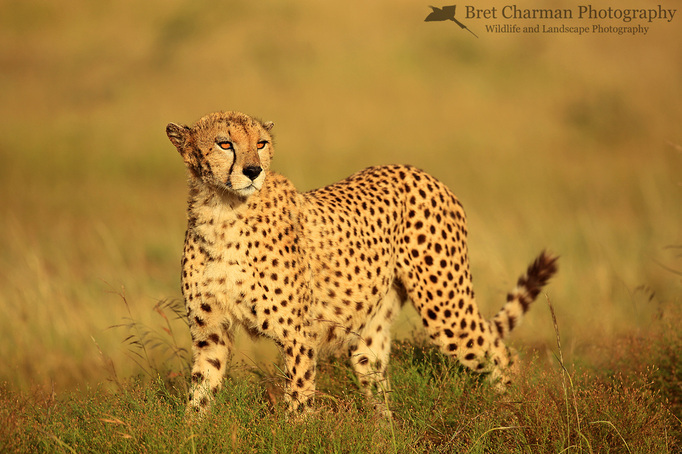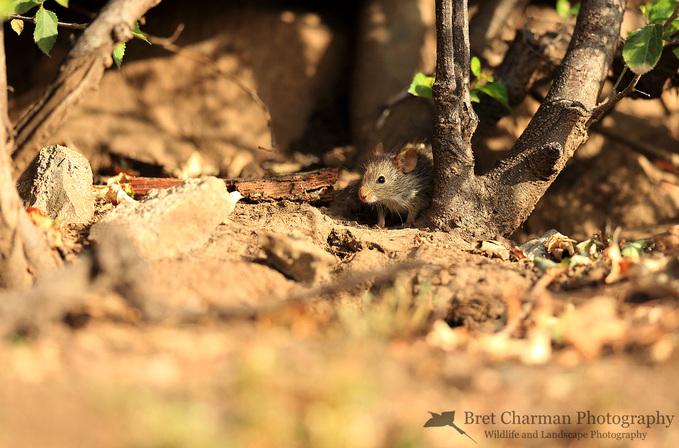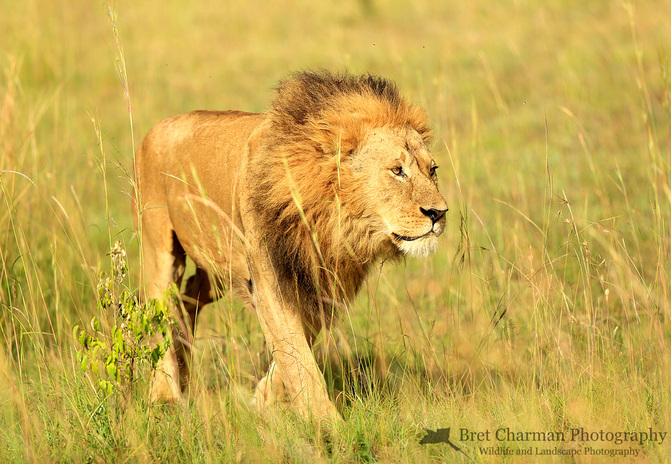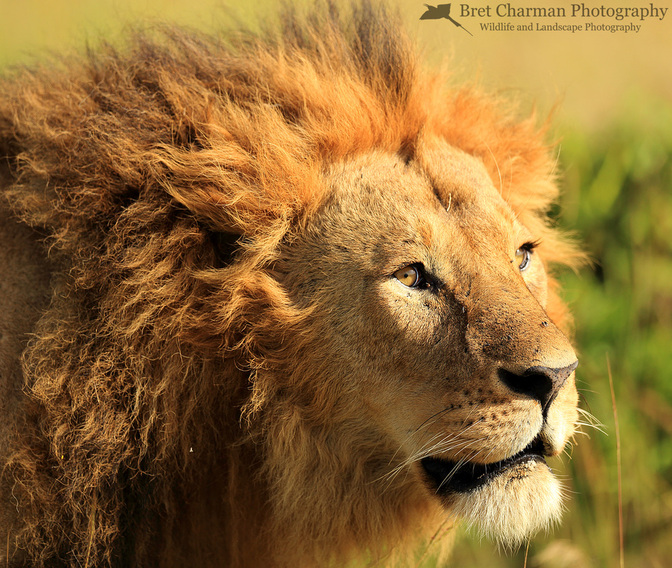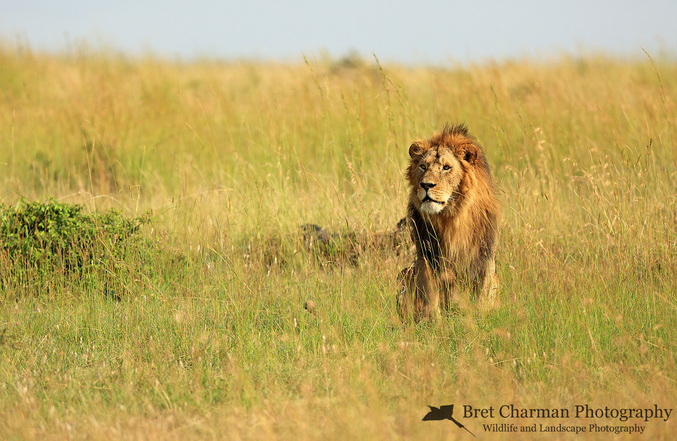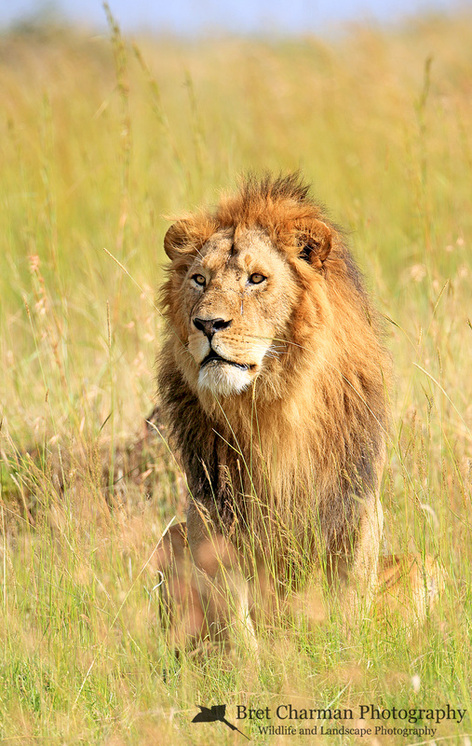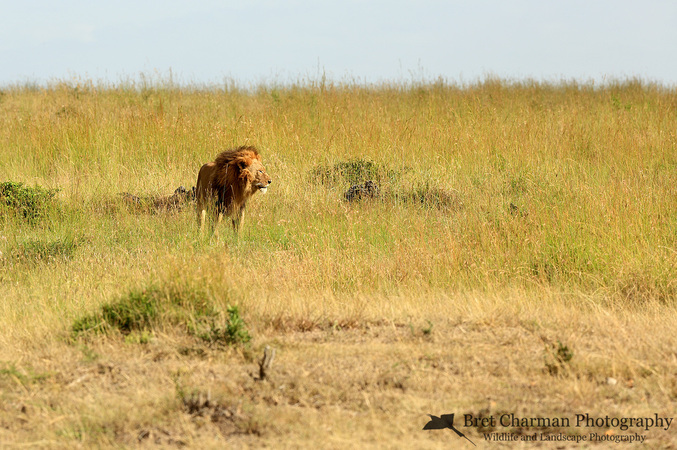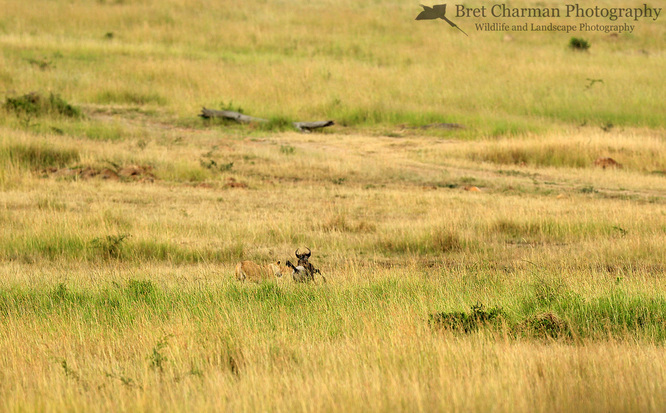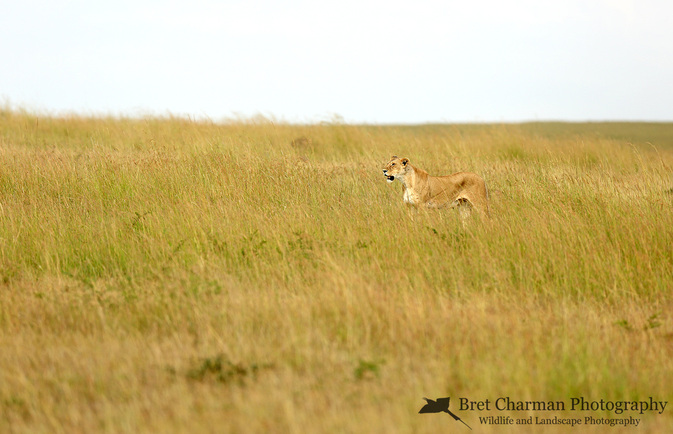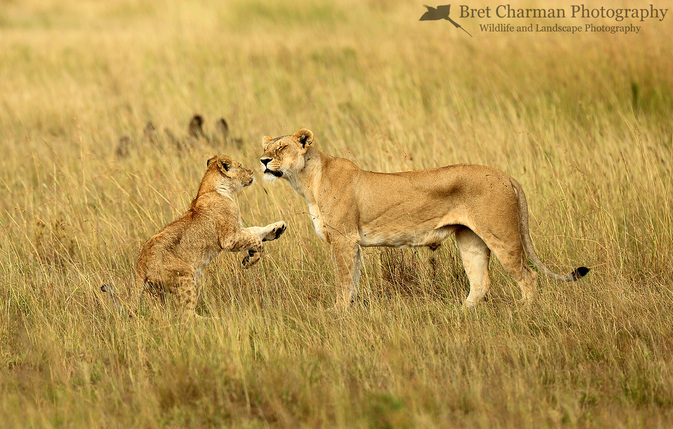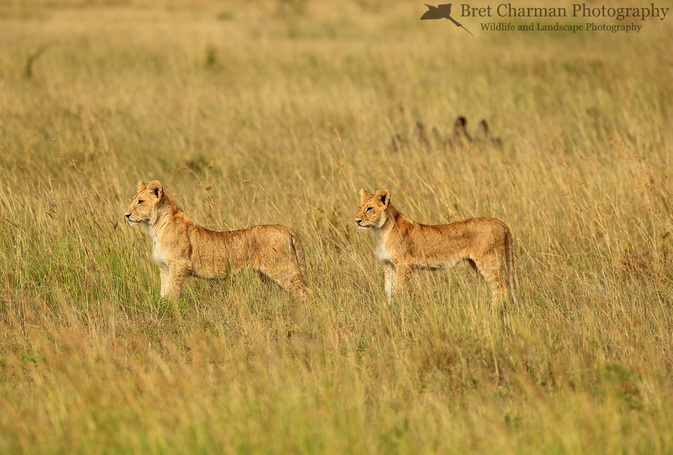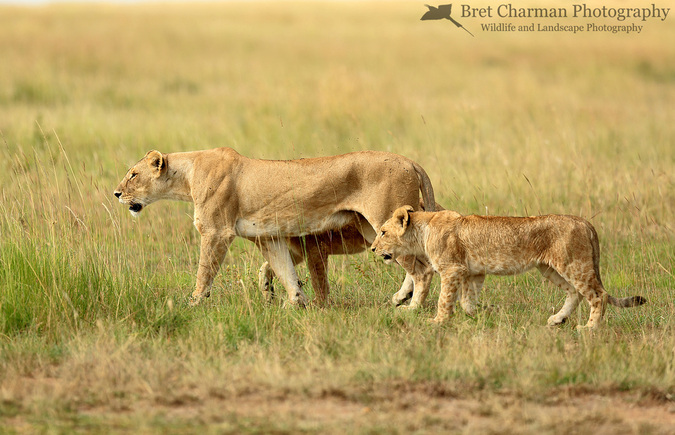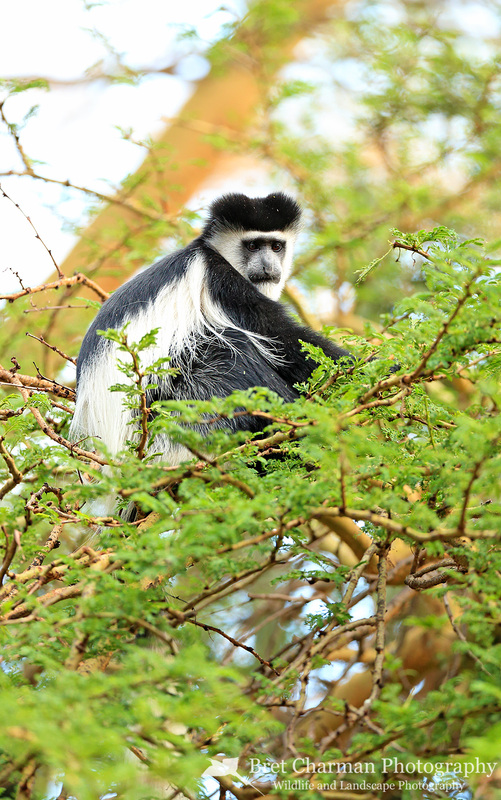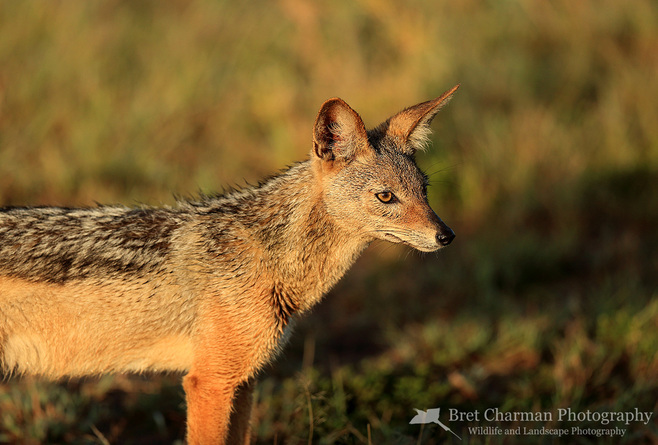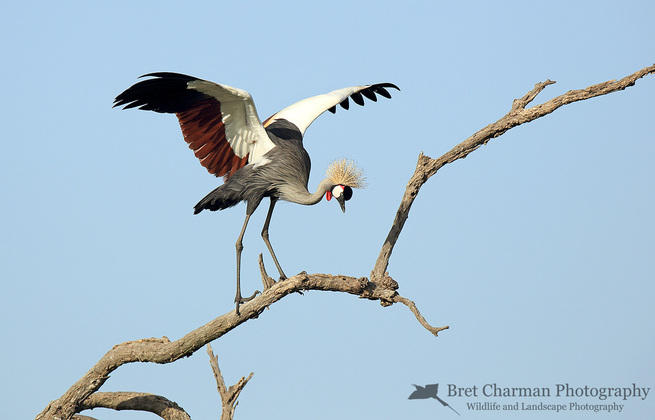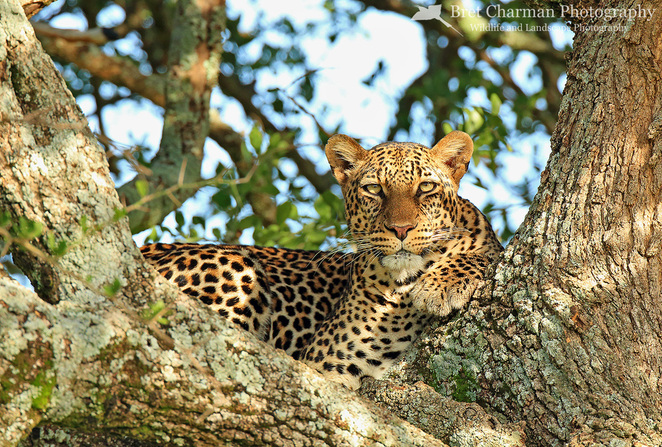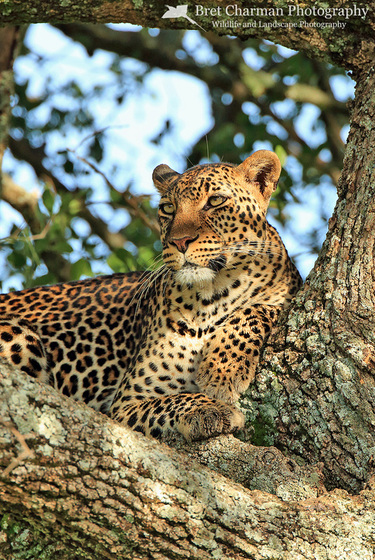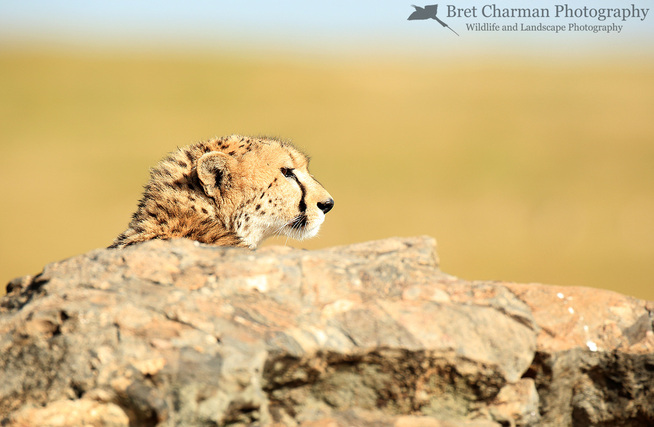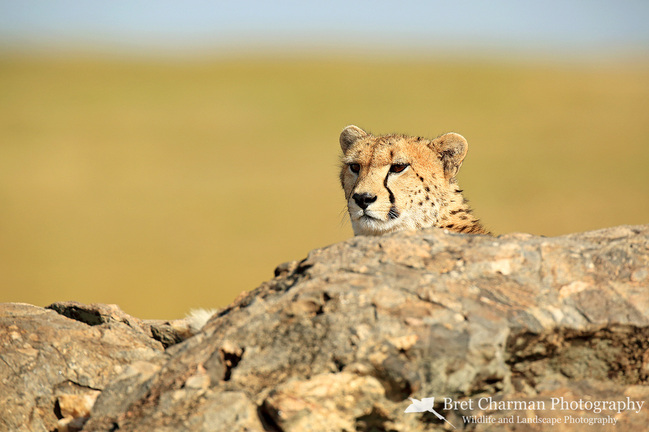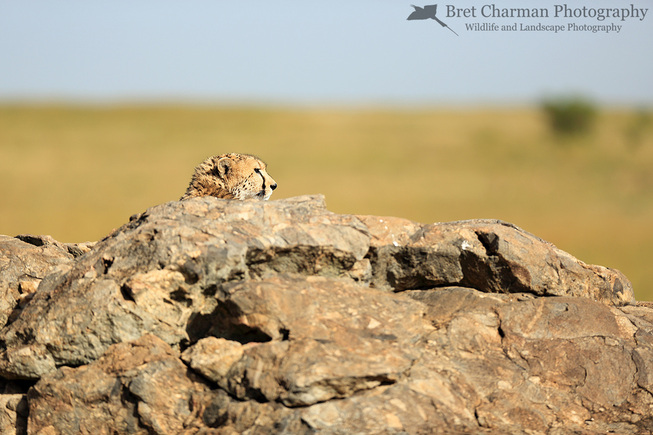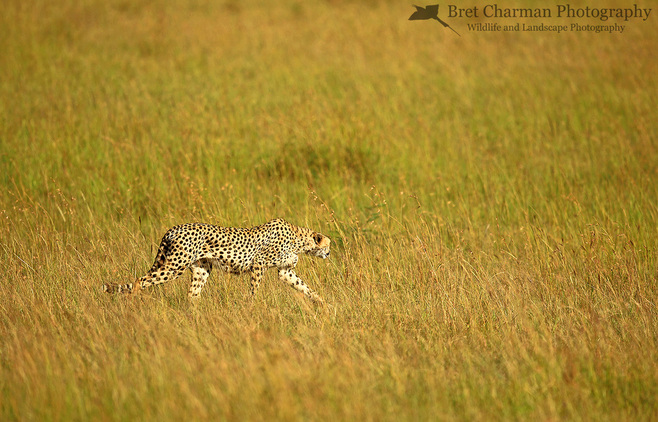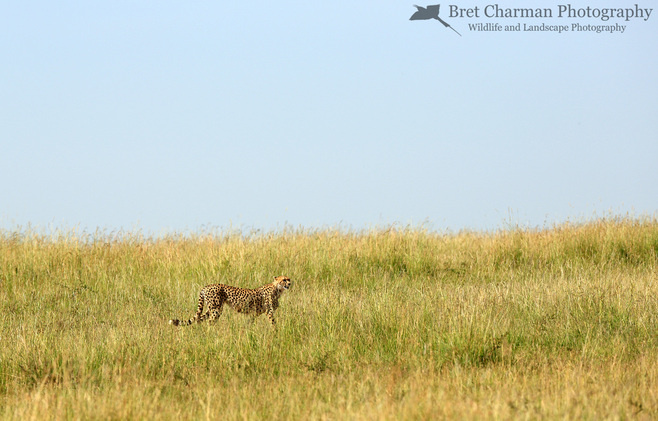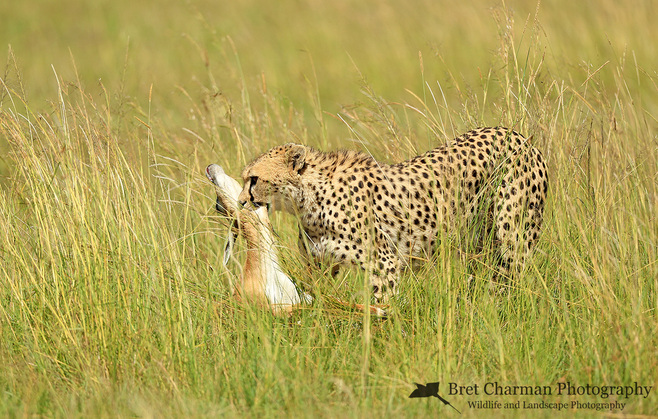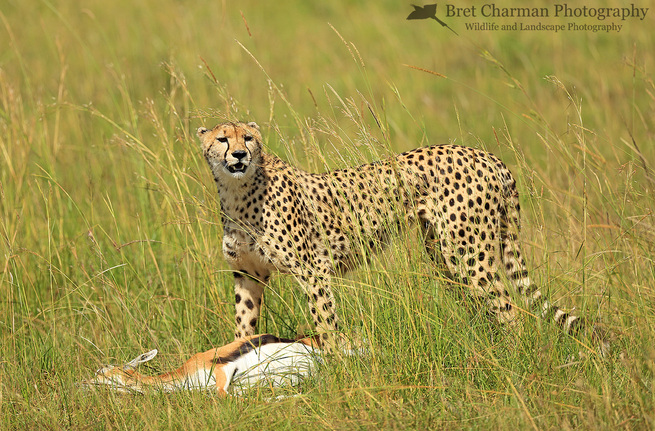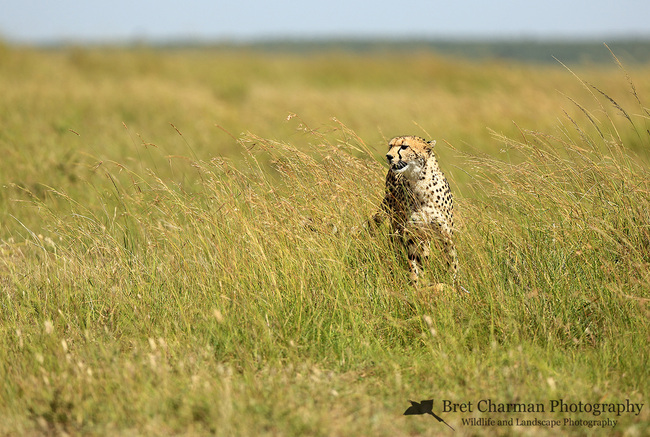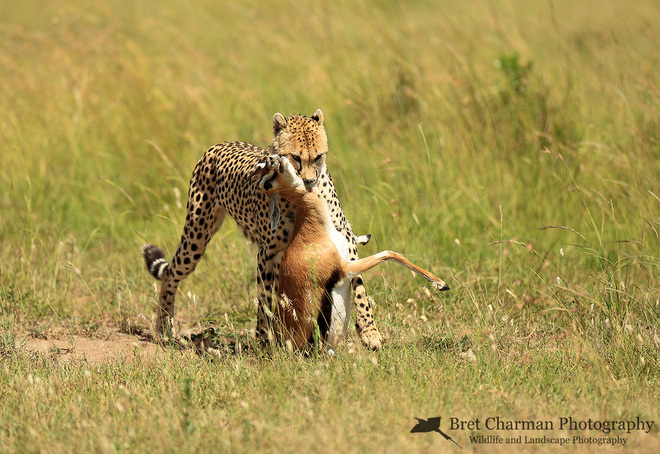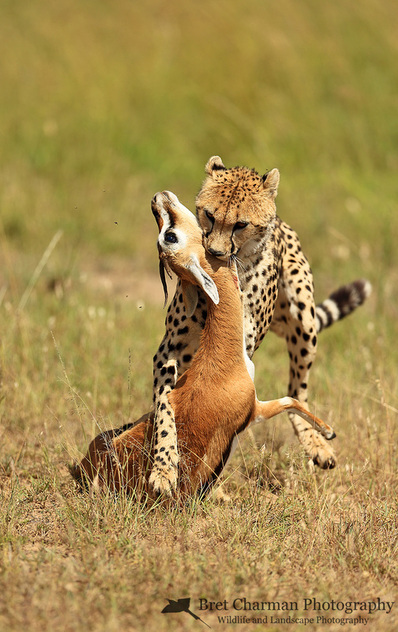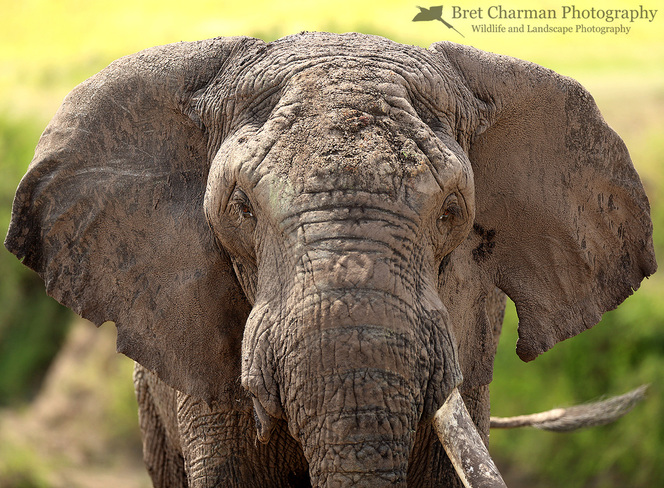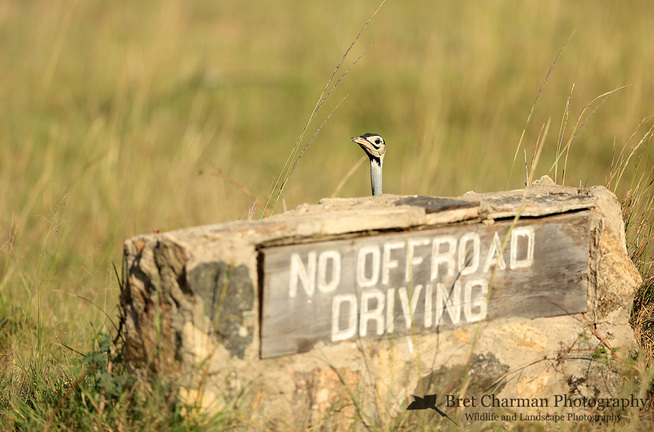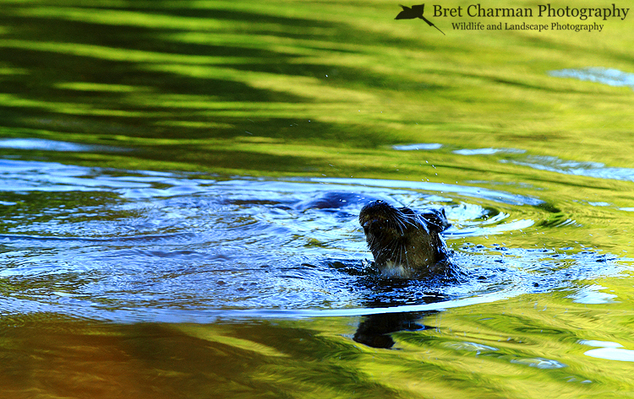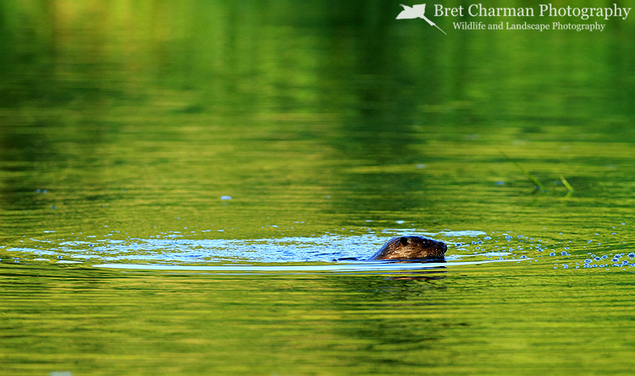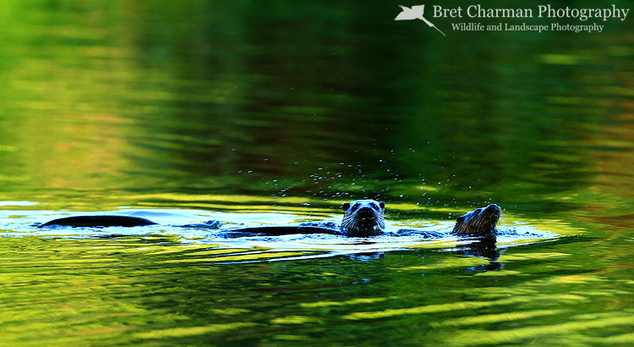|
Back in November 2020 I was privileged enough to lead three back-to-back photographic safaris in Zambia’s South Luangwa National Park. I used to work in the Luangwa Valley, back before I worked in the UK in the wildlife travel business, so I am very familiar with the wildlife and it is like home from home for me. The week before my first guests arrived, I went to a national park I hadn’t previously heard of – Luambe National Park. In fact, a friend of mine (and my old boss) now runs the only accommodation in the park and offered to show me around. So here is a little taster of my first week back in the Zambian bush, the place where I probably feel most at home. As well as Luambe, I went for a few game drives in the Mfuwe sector of South Luangwa National Park – so believe me when I tell you that the wildlife sightings were world class. I hope you enjoy an image-based round up of week one … The African wild dogs (or painted wolves) were taken in Luambe National Park whilst staying at the truly stunning Luambe Camp. I can't recommend this remote and beautiful camp highly enough, so please do visit the website to find out more.
P.S. The next few posts show even more variety and a whole host of cats ...
0 Comments
t was the half-way point on Wildlife Worldwide’s inaugural Mana Pools: Wild Dogs & Elephants Photography tour, but today would prove to be a little different. As with any day in Mana Pools National Park, we arose bright and early, ready to search for the painted wolves once more. This morning it took as a while to find the dogs, they had moved deep into the scrub, away from the alluvial plains of the Zambezi and we found them resting near a dry pan. The habitat here reminded me of some the southern areas of South Luangwa, it was very different from the open forest of the valley floor. The pack were busy doing what they do best after a night’s rest, playing. The young adults and the pups were running around at full pelt, leaping over fallen trees, just enjoying themselves. It is always an honour when wild animals allow you to approach to on foot and we were spoiled on this particular morning. About an hour after we had climbed out of the vehicles, the alpha pair decided it was time to move on in a determined manner. This usually only means one thing, they are looking for breakfast. The speed at which the dogs can move is incredible. African wild dogs are athletes of the highest pedigree and in order to keep up with them, we had to jump in the vehicles once more. They were heading back down onto the flood plain and when we caught up with them they were half heartedly chasing a warthog. Then, in a bizarre moment, a small herd of impala approached the dogs and a more determined hunt began. This time, when we had caught up with the pack, they had brought down a pregnant impala. The following images highlight what happened next … The pack seemingly target pregnant female impala at the end of the dry season and on this particular morning they pulled down an individual with an unborn youngster. Of course, sights like this are hard to see, but it is nature and to witness this behaviour is actually an honour. You can see two of the pups above playing with the foetus. Once the dogs had finished with the kill, the hyenas quickly moved in ... After watching the hyenas fight over the impala remains, we followed the wild dogs down to long pool. We left them to it and decided to spend a little time photographing a pod of hippos. The afternoon was a different proposition altogether. My group had gone out looking for the painted wolves on every single drive, so we decided that this afternoon we would head out on a canoe safari down the mighty Zambezi. If you haven't ever been on a canoe safari ... well you must! Here is a little taster for you. The proximity you can have with the elephants when on a canoe is truly remarkable. The video footage below was taken on my phone ... Be sure to join me later this year in Mana Pools for incredible encounters with African wild dogs and elephants. Please visit the Wildlife Worldwide website for more information.
Now I know that the Brown Rat is not everyone's favourite animal but personally I think they have a bit of a bad reputation. Yes I realise they can carry disease and the last thing you want is a rat in your home but outside I think these rodents are characterful and extremely intelligent. Recently, I have been photographing a family of Brown Rats and I have been mesmerised by their cheeky nature and their adaptability. They are opportunistic and make the most of any situation that goes their way and for that I admire them. Anyway I hope the following images don't make you cringe but instead give a you a greater appreciation for this very successful little mammal. The images above feature a youngster that was particularly brave and not particularly afraid of me. The rest of the images in this gallery feature the rat I believe is the mother ... As you can see I got pretty close and they were really rather relaxed. I am now tempted to actually do a project on these fascinating rodents. So, stay tuned and see if I carry on following this unusual photographic subject.
The third day in the Amazon Basin and another early start, this time I was heading to the famous 'clay licks' on the Napo River. These are muddy cliff faces along the river bank, where large numbers of Parrots come to feed on the soil. First though, we had to head across the black lake and a short walk through the forest to get to the motorised canoes. When we arrived at the river side of the lake, we were greeted by a tell tale crashing sound in the canopy. There, above us, were a huge group of Squirrel Monkeys, undoubtedly the same group as we saw upon our arrival to the forest, and joining them were a group of White-faced Capuchins. They 'monkeyed' around for a while but we couldn't stay long, we were on a mission that had a time limit. After our morning monkey fix we quickly made our way to the motorised canoes on the banks of the Rio Napo. After around a 30-minute ride down the river, we arrived at the large clay cliff where we would not have to wait long for our feathered friends. The noise was what you notice first, a constant noise which can only sound like a group of parrots together. They chatter among themselves, until one builds up the courage to leave the safety of the trees and expose themself on the bare cliff face. The parrots have to come back every few days, a wide variety of species are reliant on these clay licks to ensure that the minerals in the soil counteract the naturally occuring toxins in their diet. If they couldn't get these vital nutrients then they would not survive. Occasionally the odd Boa Constrictor ambushes the birds as they fly to the cliff face and this is why they are particularly nervous and flighty. We we were quickly in luck with a variety of different species feeding on two different parts of the bank. Mealy Amazons making up most of the numbers but Dusky-headed Parakeets providing plenty of vocal support. We next visited the inland 'cave' parrot lick of Napo Wildlife Centre, this was around a half an hour walk into Yasuni National Park and a sit and wait affair. The noise again was staggering, particularly as the birds surround you in the trees above, you know they are there but you just can't see them. Gradually they come lower and lower until one brave individual decides to break cover and starts to carve off small slices of clay which it eats as if it were food. Have a look at the video and you can hear the noise for yourself! After a long day out and about around the forest and spending time around the clay lick on and off up until lunch, it was time to head back to the lodge and try my hand at a bit of afternoon macro photography. However a very unexpected visitor ended up altering my plans somewhat. I practised my macro photography as I was meant to be running a workshop there later on in the evening, and having found some good subjects in the shape of spiders and other creepy crawlies I was happy to get some rest. However, on my way back to my room I saw some movement ... As you can see the surprise animal, and now definitely one of my favourite species worldwide, was the Pygmy Marmoset. This is the world's smallest monkey, in fact it is actually hard to describe just how small this monkey is. Let's just put it this way, it would easily fit into the palm of and adult person. At first I only saw some movement on the edge of one of the walkways, I actually thought it was a small bird. It was only as I approached the tree it jumped into, that I realised I had found this amazing little creature. I tried to find others around the lodge so they could also see this tiny primate but they had all gone out on their afternoon activities.
I was very lucky to be completely alone with the little fellow and at one point was no more than 3 metres away, it was actually quite an intimate moment. Two primates of vastly different sizes, checking on another out and seeing what they are about. It seemed just as intrigued by me as I was by it. That was why after the first shot above, the others are in the open, it was quite content to come out in the open and not hide away. What a day it was then ... amazing parrot sightings, a trip down the Rio Napo (a tributary to the mighty Amazon) and the world's smallest monkey hanging about and happy to let me take its portrait. I guess that is the beauty of wildlife, sometimes it ends up coming to you and that makes it that much better! So after my first afternoon in the Amazon I was already and raring to go for my next outing and to see the rainforest proper. It was arranged that I would be heading for the canopy walkway the next morning and so I packed my camera bag ready to go. The main issue being that I didn’t know what I might need, so I took everything … all 16 kg of it! So as you can imagine it was pretty heavy, and with daytime temperatures in the 30s and humidity levels usually well over 95% it was going to be a hard day. I woke up the next morning, heaved the bag onto my back and headed off into the forest with our English speaking guide, Oscar. We stopped every now and then to see things of interest and then we stopped close by to a particular tree and Oscar set up the scope. He spent a bit of time focusing the scope onto a small hole about 60-70 feet up a huge tree. There in the hole were three Night Monkeys, these small primates always return to the same hole to rest during the day so he knew exactly where they would be. After a pretty crappy photo (due to it being very early in the morning and way up a tree) we moved on to the canopy walkway. Wow, wow and wow! What and amazing experience to be above the forest at such a height, seeing the birds and the mammals and just the trees in all their glory. There we saw bird species of which all were new to me, things ranging from tiny flycatchers to the Black Vulture soaring above us. We saw three species of monkey; Red Howler Monkey, Black-mantled Tamarin and Red Titi Monkey. So anyway, enough blabbering, here are the pictures from that morning and some from the afternoon. After a long hard morning, but definitely one to remember, we had a lovely relaxing lunch and some noisy visitors in the form of Speckled Chacalacas right outside my room as you can see above. The afternoon activity was a photographic boat ride around the black lake, the primary focus was meant to be the prehistoric looking Hotazin. This ancient species of bird has remained unchanged for thousands of years and are extremely successful. However on this occasion all the wildlife seemed a little shy and refused to show themselves particularly well. This is when as a photographer you have to try and be a little more imaginative. The herons in the foliage I particularly like for their more artisitc approach of "Animals in their Environment".
The lake and the lodge both made good photographic subjects too. The lodge looked particularly beautiful at night with its warm lighting glowing among the dark forest. The tree frog species you can see, right at the end of the selection of images, came and found us. Whilst sat at the bar in the evening he appeared on the icecream freezer, seemingly enjoying the cold metal and escaping the constant heat even if only for a short while. So my first full day in the Amazon was certainly educational, introducing me to a variety of main species you can encounter, it wasn't a particulaly good day for close views of mammals but the wealth of bird life was obvious to see. The only down side from a personal point of view was that I wasn't really provided with any great photographic opportunities but you have to take what you can get. The rainforest isn't a forgiving place and you have to work really hard to get good images. Perhaps if this was a pure photographic tour it would have been a very different matter. But full credit must go Part 3 has a new favourite mammal and a splash more colour ... so keep reading! As many of you who follow my work probably know, I work for a wildlife travel company called Naturetrek, and last week I got the opportunity to lead their photographic trip to Finland to photograph European Brown Bear. It was my first time in Finland, and it was also my first time to photograph bears (having only seen Black Bear briefly in Canada). So after exploring the forest around the fantastic Martinselkosen lodge (where I was lucky enough to see a Beaver), we ate our late lunch in readiness for our first long night in the hide. The advice to bring a warm fleece really was not applicable for this trip, the temperatures where in their high twenties and after the 2km walk to the hide everybody had certainly worked up a sweat. It is worth noting that one must have a really good quality insect repellant as well as covering up on the walk to the hide! We arrived and there, less than 20 yards away (whilst we were still on foot), was a full grown bear, nothing between us and it ... a wild Brown Bear!!!!! I honestly could not believe it, we shuffled into the hide as quietly as we could and all rushed to get our camera gear ready. Within moments there were a multitude of bears coming to find the food that Martinselkosen leave out for them. This location is right on the edge of the Russian border and they are fed dog biscuits and salmon, only enough to supplement their diet so that they do not become dependent upon it. Except for the pesky gulls that turned up, and seemed to eat nearly all of the salmon, there was a quick appearance from a Black Kite - swooping down and grabbing a piece of fish before flying up into the tree tops. Anyway enough text for now I know, you want to see the bears ... so here they are for you: The bears come and go in waves and more often than not, in family groups as mothers bring their cubs to fatten up! At times there were up to 10 bears (including cubs) all feeding around the area. (By the end of the night we reckon we had seen around 30 individual bears.) As some came in, some would leave and this meant the first few hours in the hide went very quickly indeed ... almost non stop action from the very first moment at 5pm until nearly 11pm. The youngest cubs were definitely the crowd pleasers but the behaviour of the adults and the pecking order was very obvious to see. It was all rather fascinating as well as extraordinarily exciting! The other thing that was very noticeable at the time and particularly in the photographs, is the huge variation in the bear's colourations. Some individuals were definitely darker than others, and some such as the female above were almost entirely "blonde". The cubs also showed a diverse range of markings and colourations which, of course, would be inherited from their parents. As I said earlier, the cubs were definitely the stars of the show and everybody loved watching their antics as the evening went one. One thing people particularly wanted to see was the cubs climbing up high in the trees but on this occasion we were not treated to this amazing sight. You'll have to read my next post to see what happened the night after! Finally, one last image for you showing what the forest looks like in the midnight sunshine. As the area is not too far from the Arctic Circle there is 24 hours of light on offer and even at midnight on a clear evening you can get some incredibly good light! A photographers dream to a certain extent but the lack of sleep can certainly get to you if you decide to spend all night watching the bears!
So, the 5th day of the tour, and our last opportunity to get some shots in the Mara. We went for one last morning drive before heading off towards Amboseli NP. If you didn't know, Amboseli like the Maasai Mara is on the border with Tanzania and it has quite a spectacular backdrop: Mt. Kilimanjaro (the world's tallest free standing mountain). Firstly though we would be staying the night at Lake Naivasha, enjoying the tranquility of this beautiful setting, and hopefully getting some good shots of the wildlife too. One thing that had managed to elude us over the past few days was a big handsome male Lion, we made sure we ordered one for the last drive, instructing our fantastic Wild Eye guide Joseph to deliver. Of course we offered to buy him a Tuskers if he succeeded! So, we left the camp on the Mara River for one last time, knowing we would meet the staff the next day in Amboseli. We were heading towards the Mara proper as a pair of Jackal crossed the road in front of us. We of course got a few mandatory snaps before moving on. As we rounded one of the gentle hills I noticed a light shape in the grass, only a couple of hundred yards ahead and you could tell it was a big cat. Luckily for us, the cat was laying right by the road, we quickly realised it was the same Cheetah as from the night before (it had some sort of skin condition, mites perhaps, and it had rather scruffy ears). The light was superb (changing every couple of minutes) and the cat performed perfectly, sitting and posing before moving off and then laying back down again. "Purrrfect!!!" (And yes, before you ask, Cheetahs do actually purr.) Sorry to interrupt with some text, but I would love for you all to pay close attention to the image above! I am going to nerd it up a bit here and I am sure some of you are already well aware of this fact anyway. Cheetah are from a different family of cats to those of the Lion and the Leopard, which are both part of the Panthera family. The Cheetah, unlike the Lion and the Leopard, can not fully retract its claws and as you can see in this photo, the claws are well and truly on display! Fascinating huh? (Back to the pictures now I promise!) What a great start to a day it was then, you couldn't ask for a better opportunity to practise your big cat portrait photography. Also interesting to see that these majestic animals don't have it all their own way, a skin condition might not seem like a life threatening condition, but if you are at not at your peak in such a competitive environment then it could be your downfall. I really hope that this Cheetah carries on feeding successfully for many more years to come. After this fantastic sighting we made our way to the bridge, where we would leave the Mara Triangle one last time before heading through the Maasai Mara NP and onwards to Lake Naivasha. As we signed out, at the offices, there were ample photography opportunities. Most people opted to photograph the Mara River and the extraordinarily coloured Agama Lizards but I set my sights on some small rodents. Just as we were readying ourselves for the drive to Lake Naivasha, we got some news that a large male Lion had been seen not far from us, back in the Mara Triangle. We turned around and headed to the spot to see if we would strike lucky and see the cat. We arrived full of excitment to find no sign of the large male but we did find the local Park Guard. A few other vehicles arrived ahead of us. The guard directed them across the valley to where there were some lions in the grass (no male though). As we approached the guard's vehicle, we had invited him to breakfast the day before, he hinted that the large male might be in the bushes next to us and indeed it was. As the other vehicles made their way across the shallow valley we primed ourselves, ready for the lone male to make his move. We didn't have to wait long as after only a few minutes, he was up and moving across the hillside. We of course snapped away happily, enjoying the moment we had ordered earlier on in the morning. We decided to leave the big male in peace and quiet, and thought we would go and pay a quick visit to the Lionesses across the valley, before finally heading off and making our way out of the Mara. However, once again, we got to see something miraculous. A lone Wildebeest was wondering straight towards the lions, and suddenly one of them went into stalking mode. It was amazing to watch and before we knew it the Lioness sprinted off, chasing the Wildebeest down into the valley below us. Not making for the best photographic opportunities but it was all very exciting. The Wildebeest got away and then we were lucky enough to experience one of the Lions greeting her cubs and walking with them through the long grass. It was a lovely intimate moment and one that I very much enjoyed. We decided that it really was time to head off after this chance sighting. We eventually made our way out of the Maasai Mara NP and onto the road Northwards towards the Maasai town of Narok and onwards again to Lake Naivasha. We arrived at the extremely comfortable Sopa Lodge (admittedly after a pretty long and bumpy drive) and were treated to our first sightings of the wonderful Black & White Colobus Monkeys. To sum it all up then, another day full of fantastic photographic opportunities and some truly amazing wildlife sightings. We really couldn't have got the shots we did without the patience of Joseph, our guide. He listened to every thing we said, always getting us exactly where we wanted to be at just the right time. So once again a massive thank you to Joseph for putting up with us picky and demanding photographers. Thanks again to the Wild Eye photography experts, Gerry and Andrew for their guidance and thanks to fellow tour participant Richard for his continued good humour!
The 3rd day in the Mara promised to be a good day, after the success we had the day before, it was going to have to be pretty epic. And the morning started off absolutely perfectly, we found our Leopard friend up the tree, looking rather relaxed and pretty sedate. We did find some other subjects to photograph, including Grey Crowned Cranes and a Jackal but the Leopard stole the show somewhat! After taking far too many photographs of our lovely Leopard we heard about a Cheetah only a few hundred yards away. As we hadn't yet seen a Cheetah we decided it was worth a chance and we left the Leopard to enjoy its rest. However when we got there we were rather disappointed, there were quite a few vehicles around the Cheetah and after only a few moments it moved off. Without getting a single decent shot we were a little frustrated. We then heard about another Cheetah sighting further down the road, sat atop of a rock and we rushed off to see whether we could get some shots. What happened over the next 3 hours was truly phenomenal. It was probably one of my top photographic and top wildlife encounters at the same time. It was truly exhilerating! After 15-20 minutes of excellent portrait photography the Cheetah decided it was time to move on. She jumped down off of the rock and headed straight towards a herd of Thompson's Gazelle. They spotted her very early on and she quickly gave up going to ground. We stayed with her for the next couple of hours, watching and waiting! It was then, after the gazelle came too close, that the Cheetah made its move. Within only a matter of moments it was off, running at full speed after a young male Thompson's Gazelle. Unfortunately for us it was over the hill in a split second. We quickly made ready and we headed off to see whether or not it was successful. It was successful and its quarry was still alive. Seeing this side of nature is at times very hard, but at the same time you cannot help but be enthralled and I for one feel extraordinarily privileged to have been able to say I saw such an intense spectacle. We decided to leave her to it so she could feed undisturbed and not draw attention to her. We would come back later and see how she was doing. We headed off across the Mara River and into the Maasai Mara NP for a spot of lunch and we explored some of the big open landscapes that this has to offer. We came across some Lion lazing in the shade, a rather grumpy bull Elephant and plenty of Topi. We then headed back to camp, checking up on the Cheetah which had eaten a whole leg and was starting on another. What a wonderful day it was then, big cat sightings galore and some truly epic landscapes. Animal behaviour at its absolute best and a great day out with our guide Joseph as well as Wild Eye ambassador Andrew Aveley and Richard Sparks.
Sorry for the delay in updating my blog, it has been a bit mad the last couple of months. I have been busy at work and the weather has been, well, awful! I have hardly been out with my camera since the spring, everytime I seem to get some free time and make plans to head out the weather quickly deteriorates. Back at the end of August a friend of mine, Zane Engelbrecht (another wildlife photographer) invited me down to his local patch in Dorset to photograph Otters. Of course I could not refuse this opportunity, although it did mean an early morning start of 3.45 am. The Otter had been struggling in the UK up until recently, the rivers were polluted and being at the top of the food chain did them no favours. The population crashed and it has only been recently that Otters have, once again, been recorded in every county in the UK - thank goodness! I have spent many hours sitting on river banks waiting for the briefest of sightings and never had much luck. However the Otters outside the town of Blandford have become particularly comfortable around people and they are also extremely active throughout the day. As the sun rose we set off in search of our charismatic subjects, and after nearly an hour walking up and down the river bank I spotted some movement on the river bend ahead. At last we found the family and I was astounded at just how close we got. There were moments when they were so close I could not focus on them, in fact the mother climbed up the river bank and had a good look at me before sliding back down into the water. It was hard to keep following an individual, the stream of bubbles were the only clue as to where they were underwater. However, when they teamed up it was nearly impossible to follow one. They seemed to be eating shellfish which they were collecting from the river bed, and then working them around in their mouth, eventually crushing them open. Occasionally the Otters would appear in a patch of the river that was lit in the beautiful golden light. It was definitely a perfect morning but I really struggled to get the Auto Focus to lock on. I am not sure whether it was my poor technique (I have never photographed Otter before) or whether it was my camera acting up again but a week later I sent the camera in for another attempt at sorting out a whole host of AF issues. It really was a magical morning, the light was surreal and the surrounding landscape created an idyllic scene. I was pretty tired by the time I got home but I was on such a high, to get so close to one of the most elusive creatures in the UK was an unforgettable moment for me. It is certainly one of those stand out moments in life when you think to yourself, did that really happen? And luckily for me it did happen and I can't wait to head down there again and make a day of it.
I have a few plans and I am going to try a more subtle approach next time, I now know a couple of scenting positions, where I think I might be able to pull off some wonderful shots. Considering I thought of this as more of a recce I couldn't be happier with the results of the day. |
AuthorBret Charman Archives
July 2024
Categories
All
|

